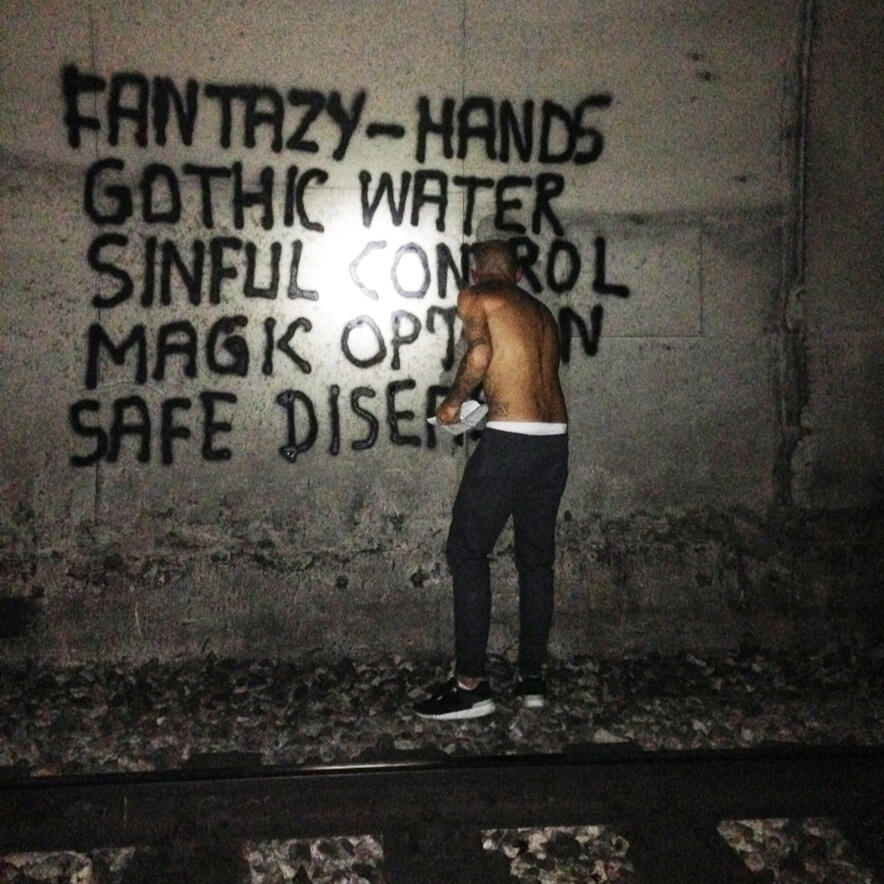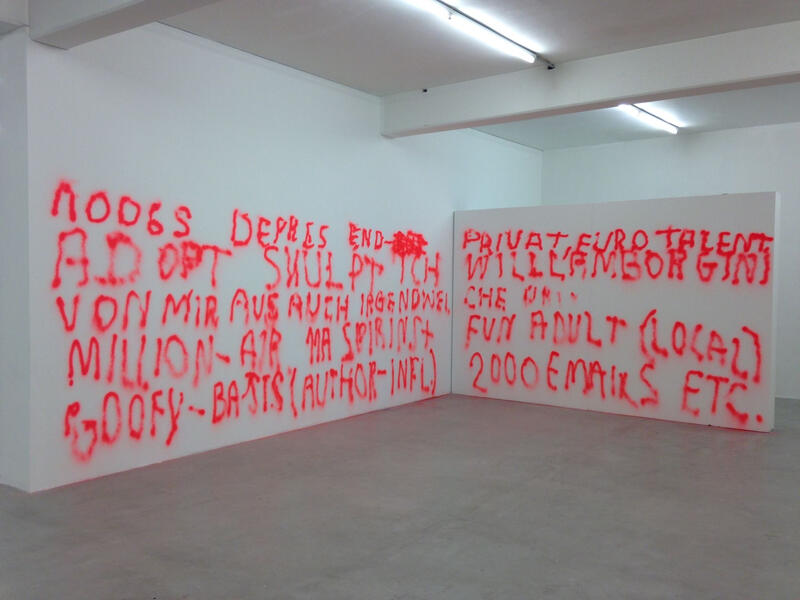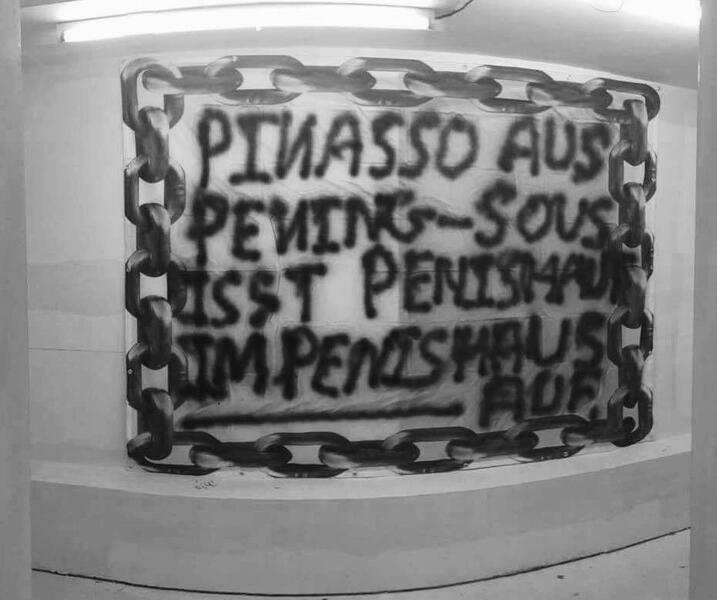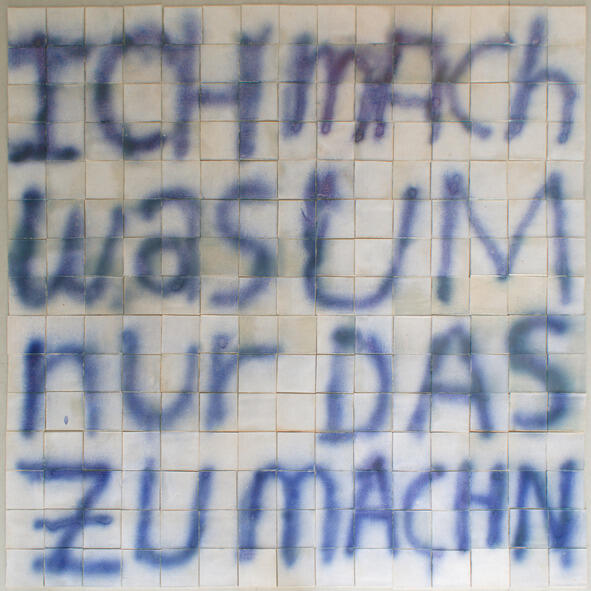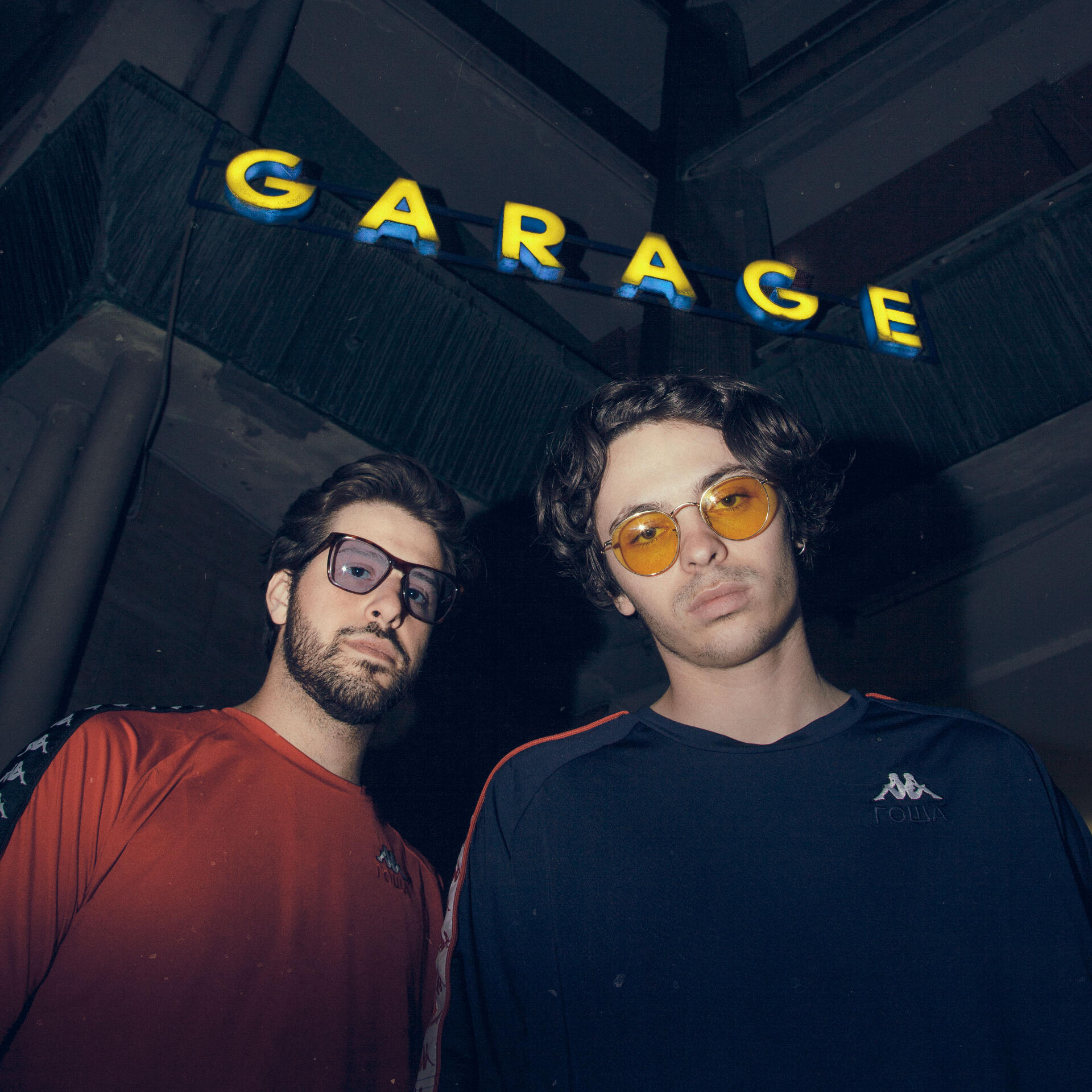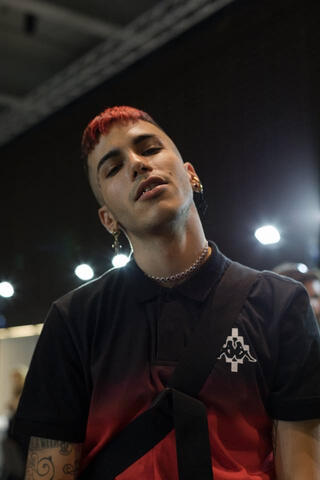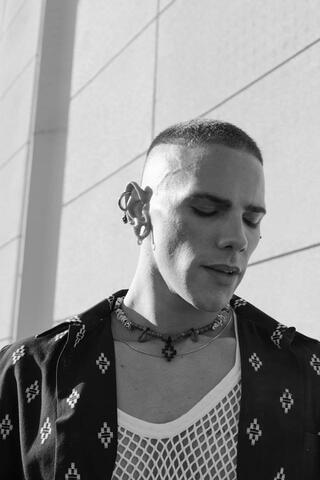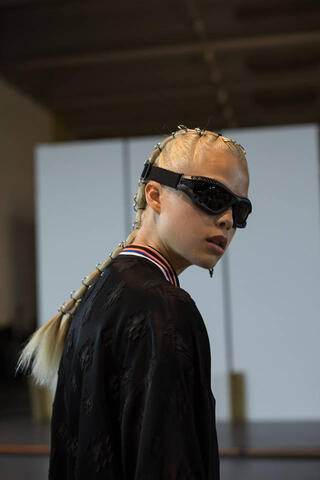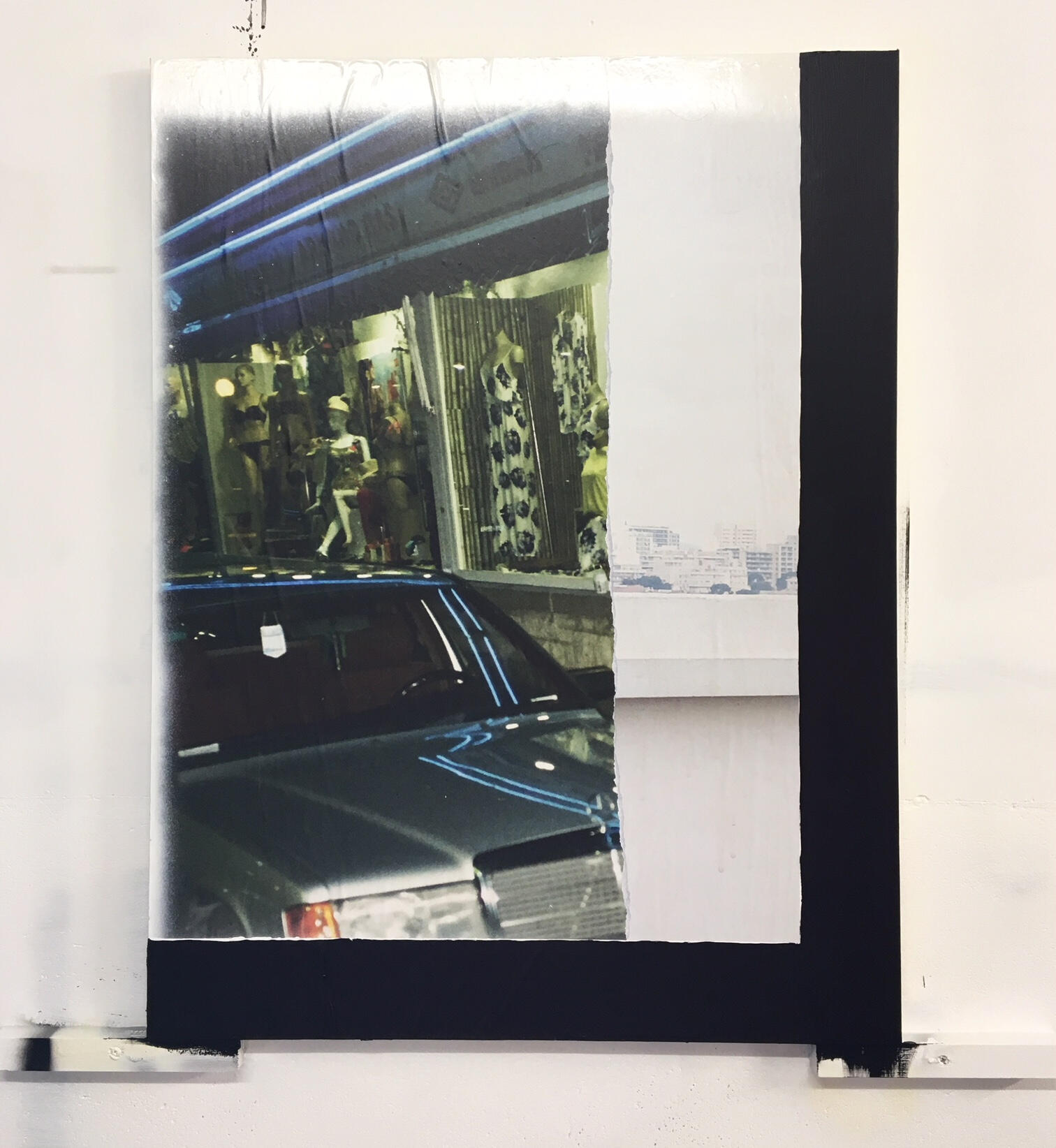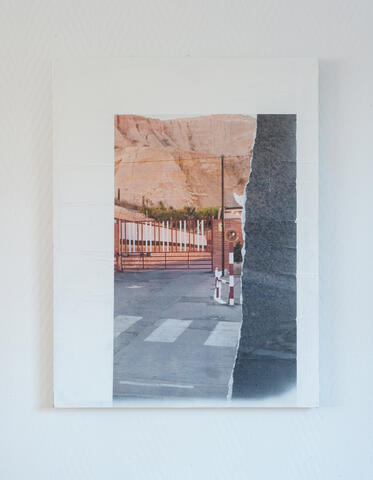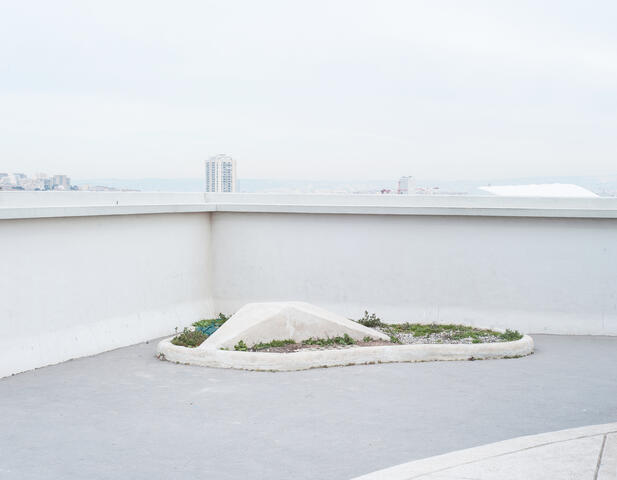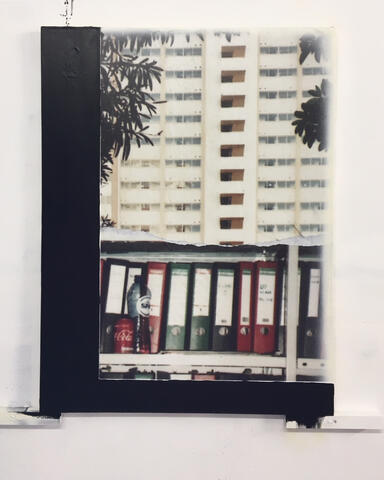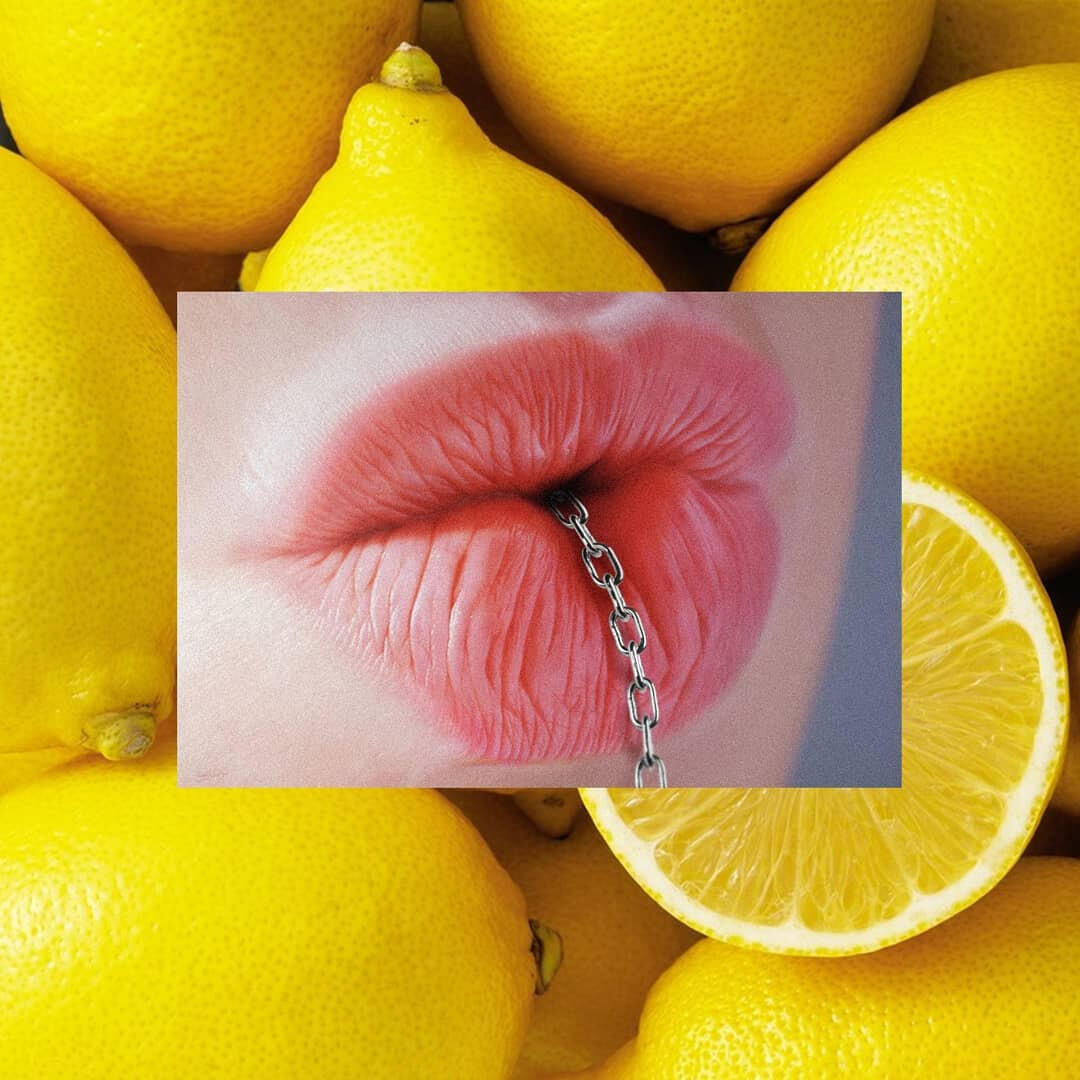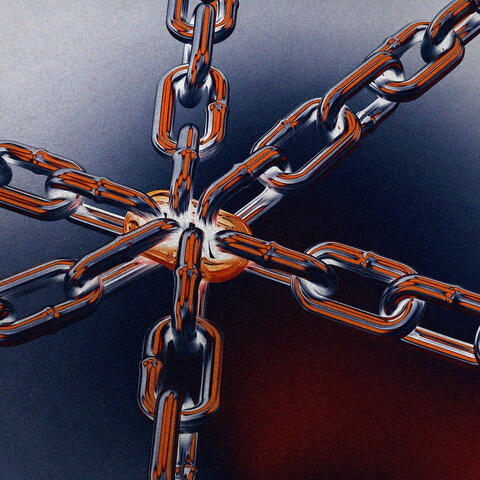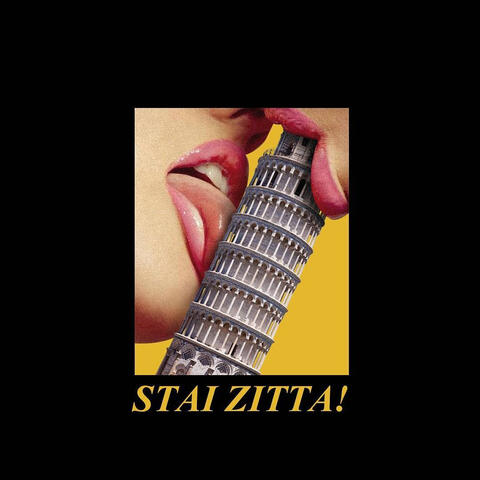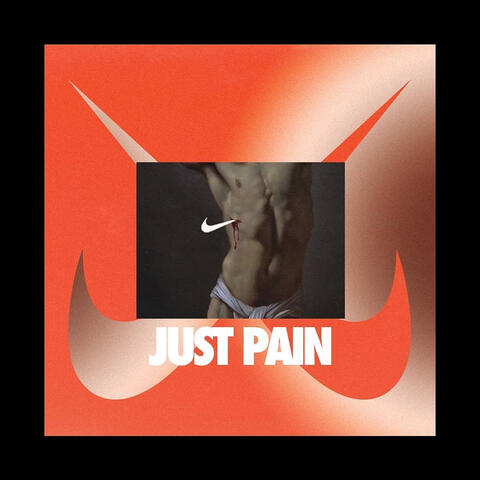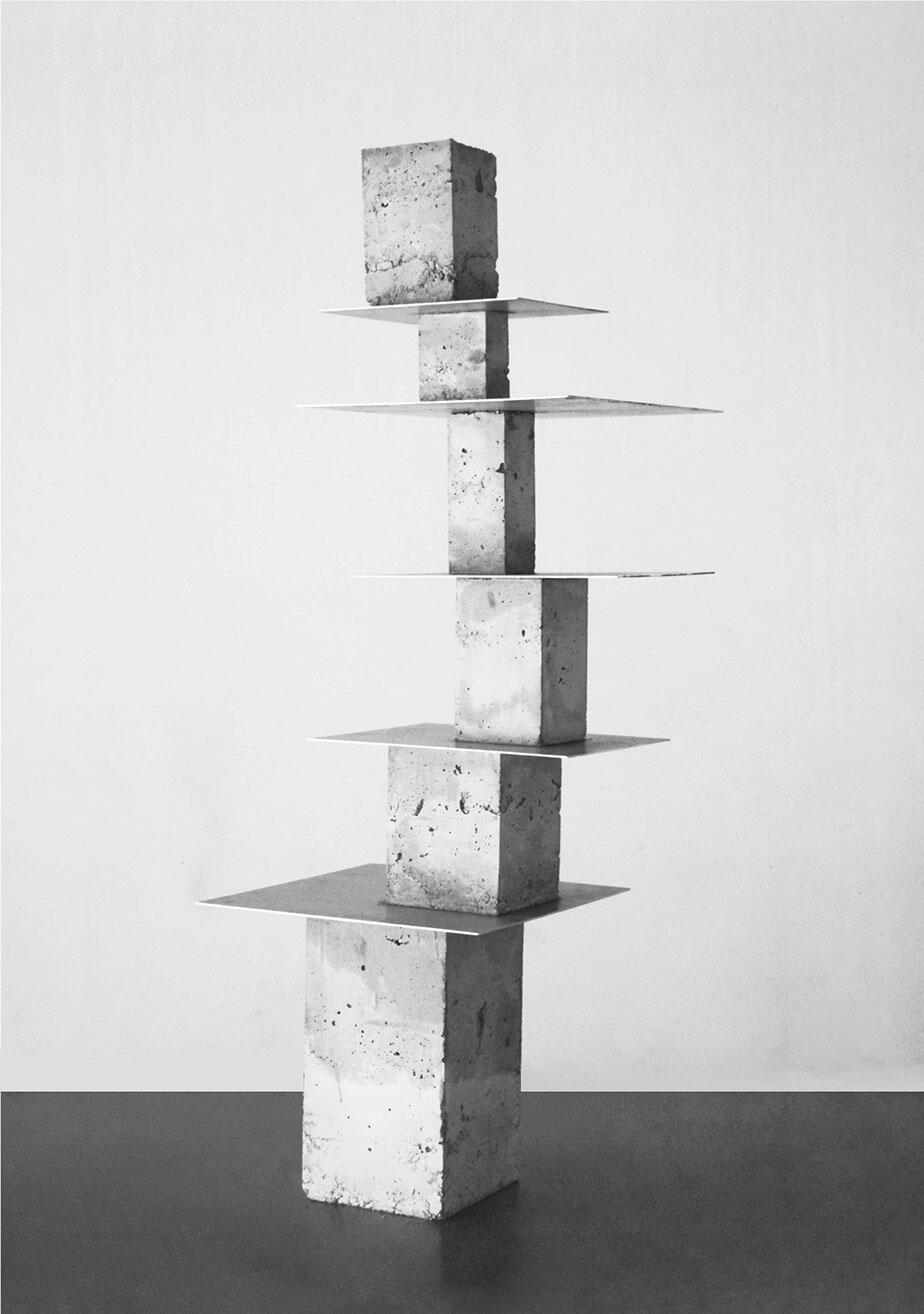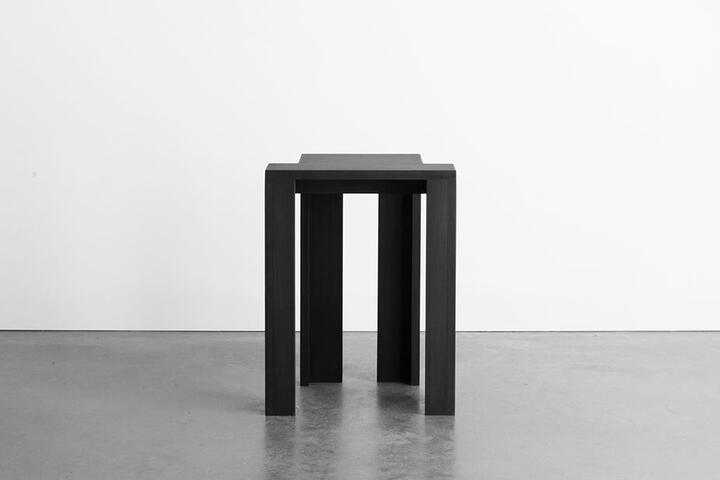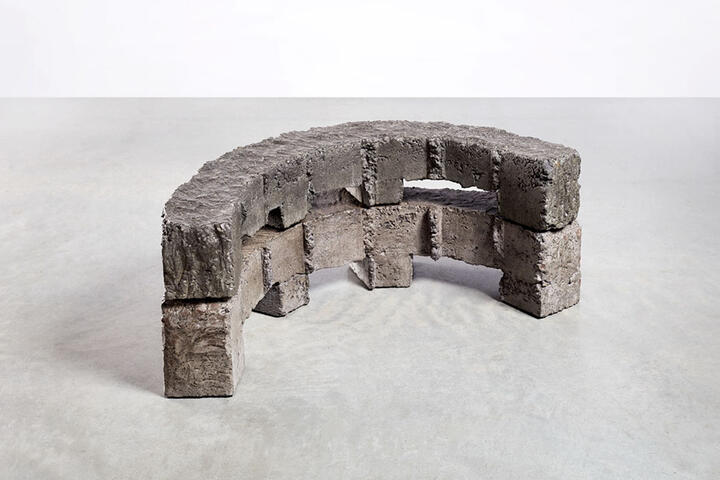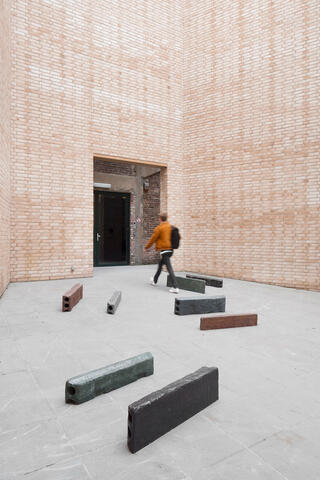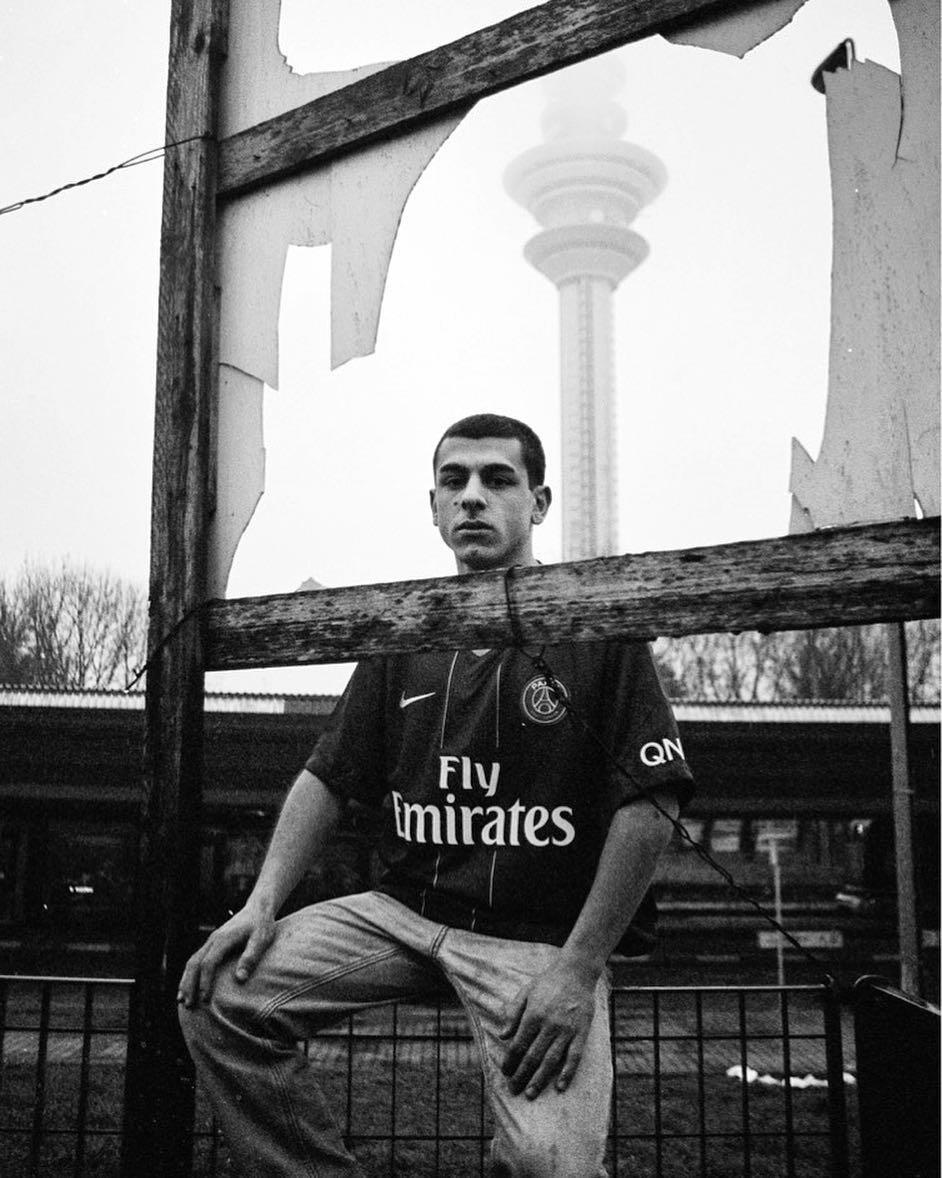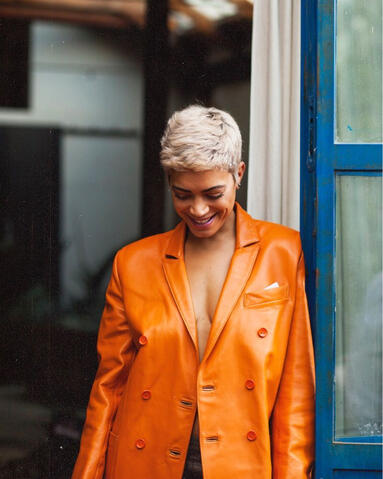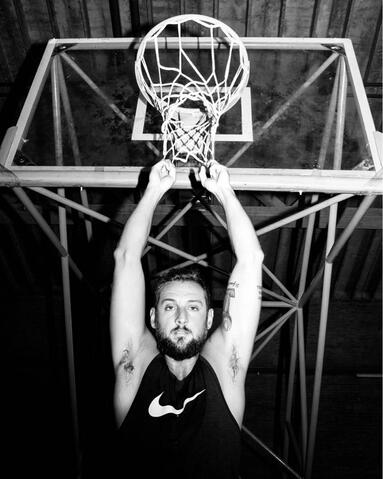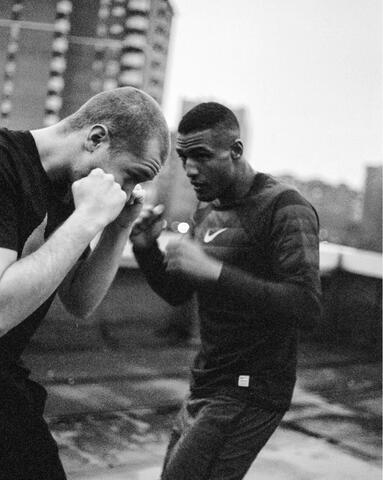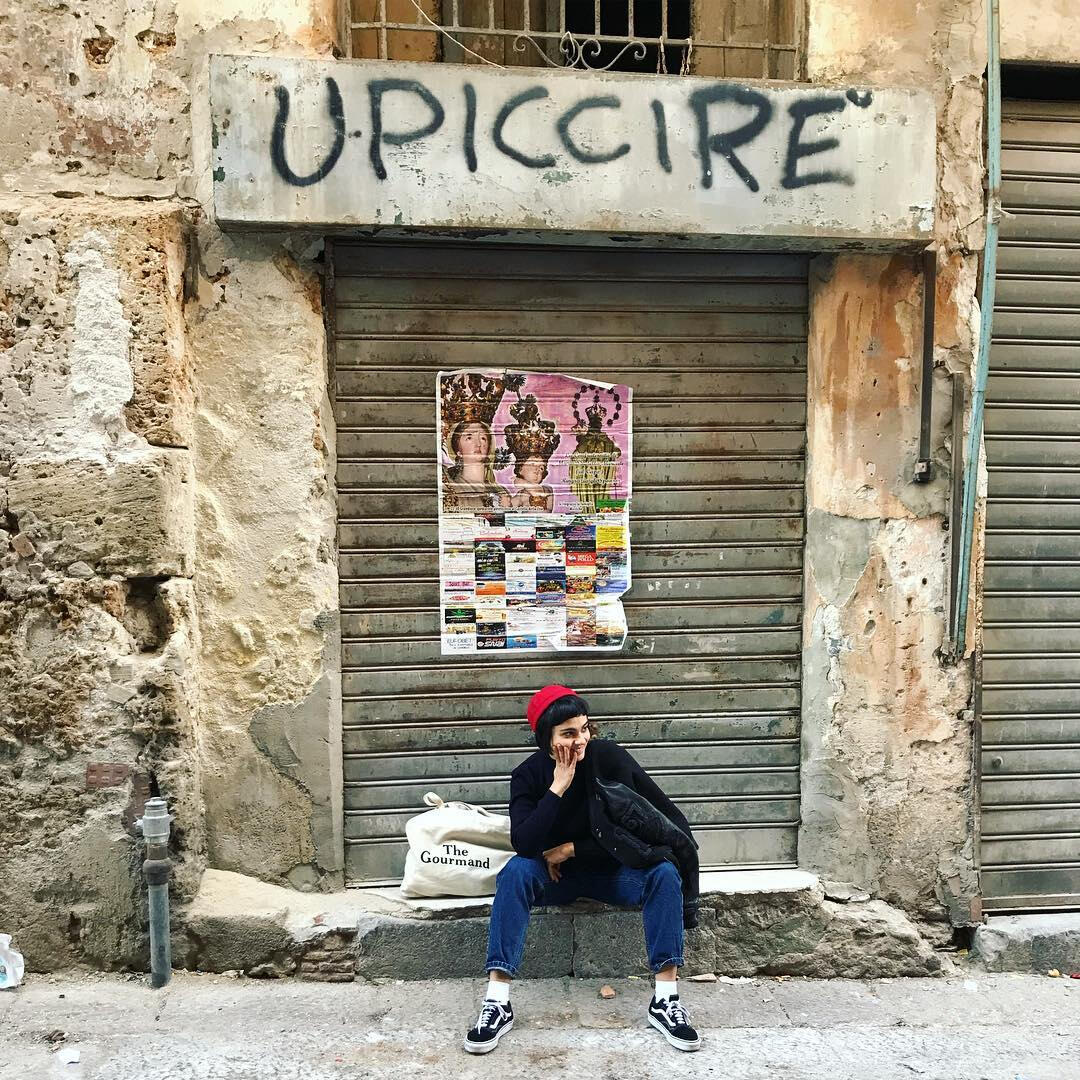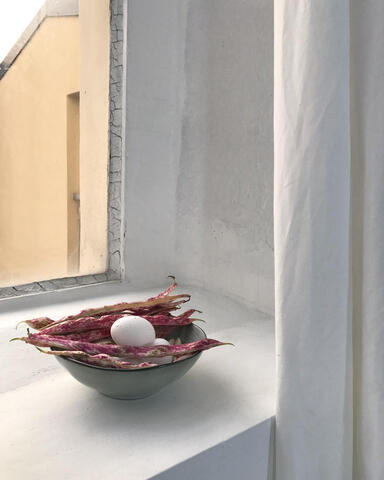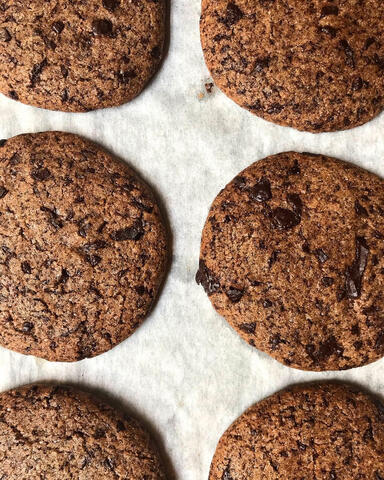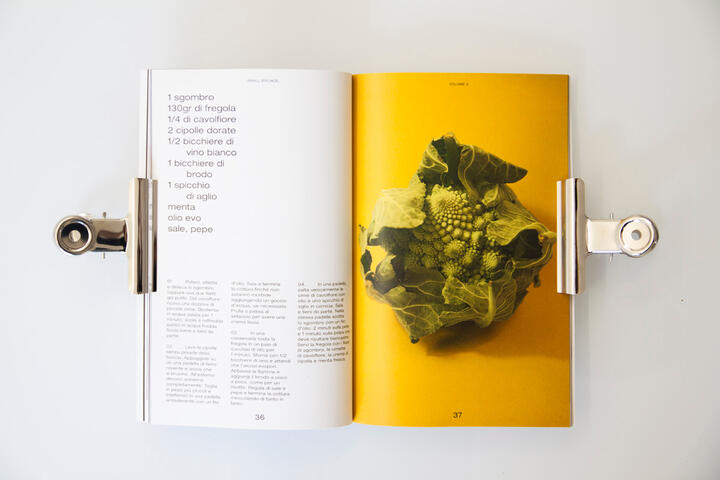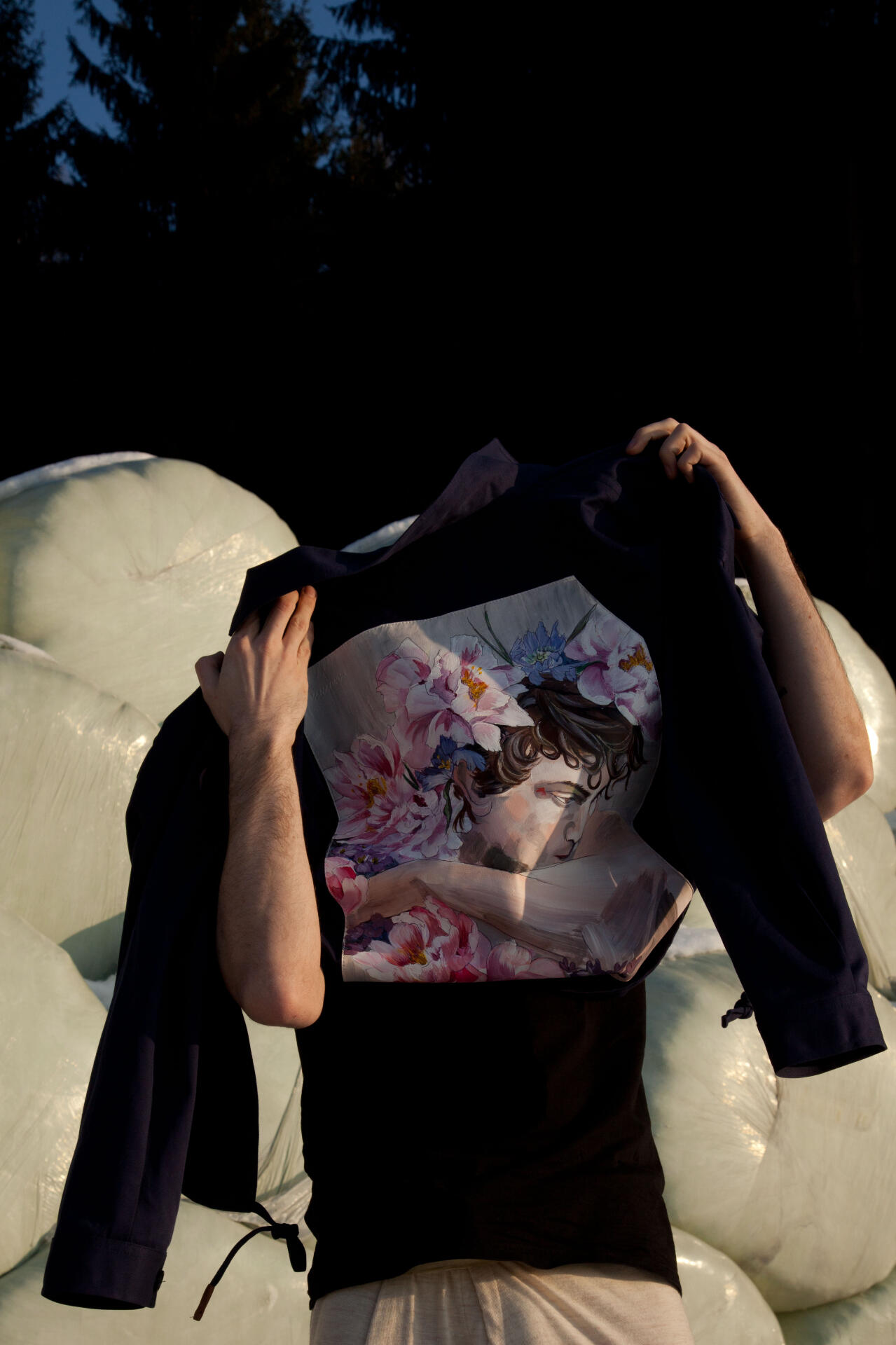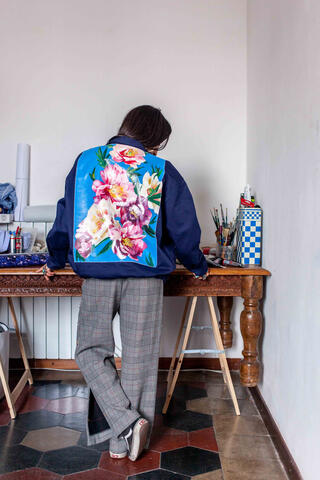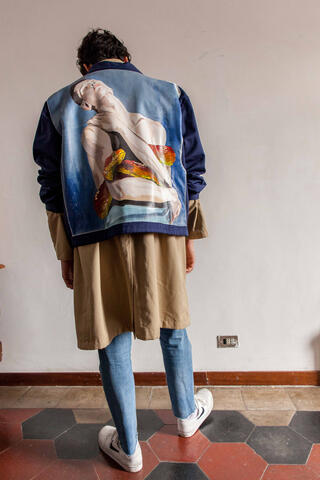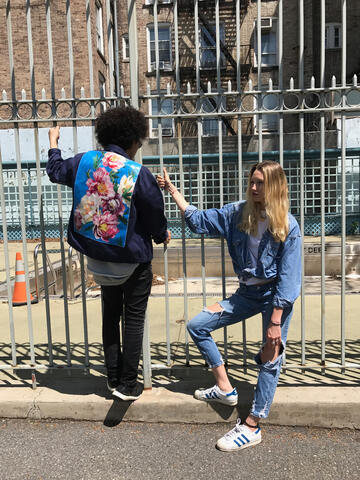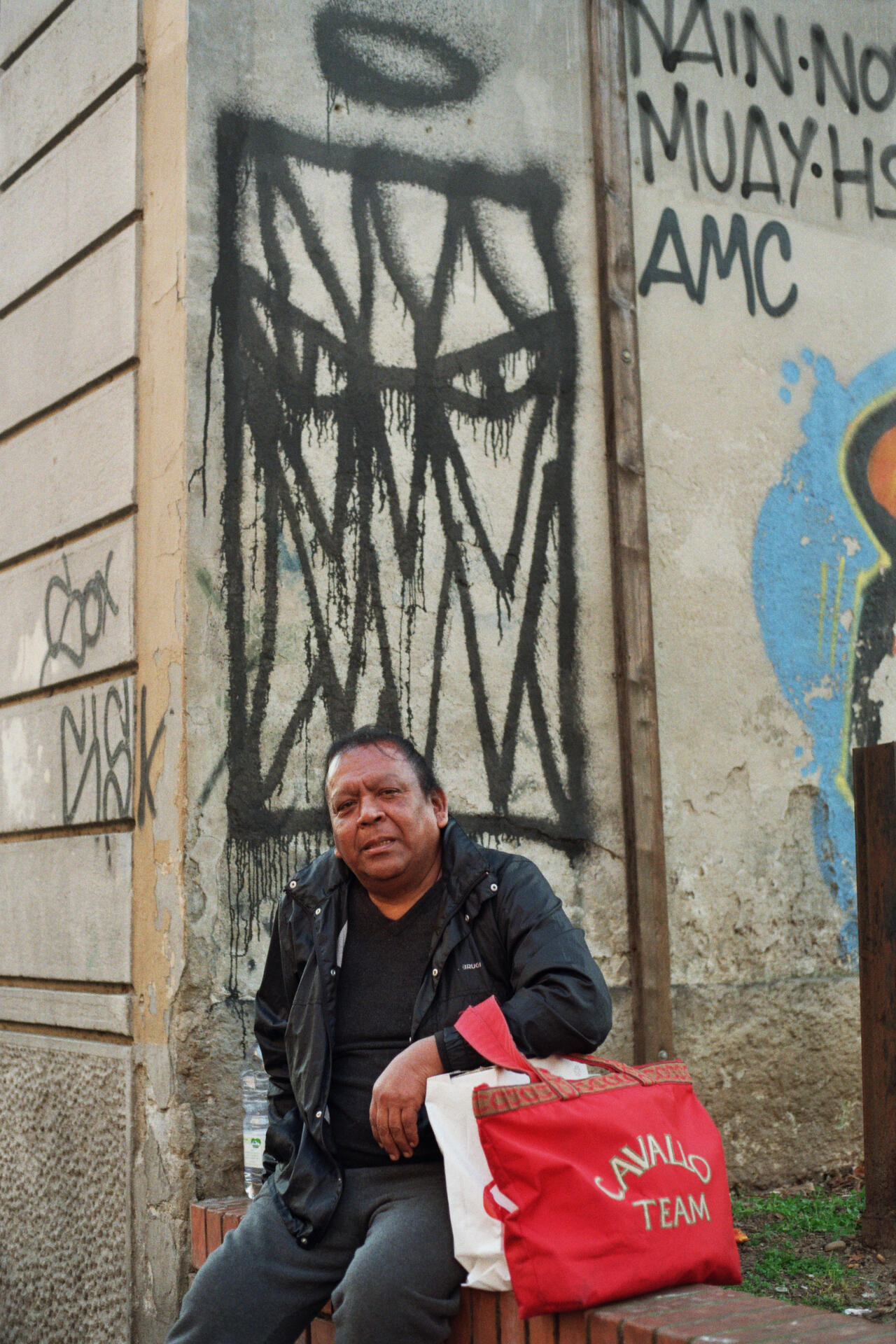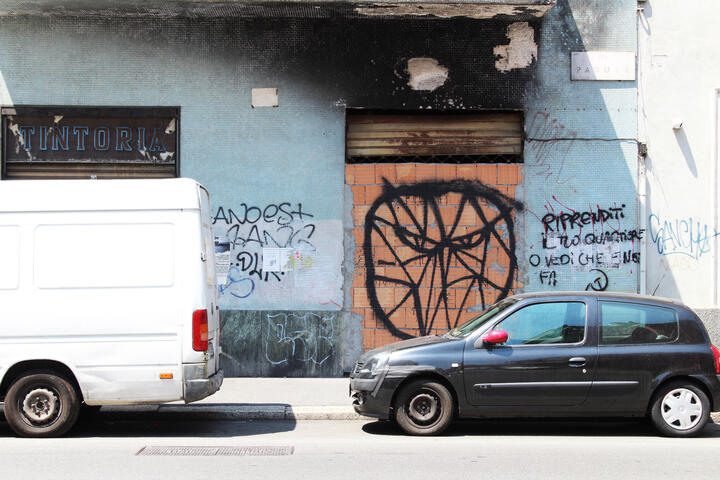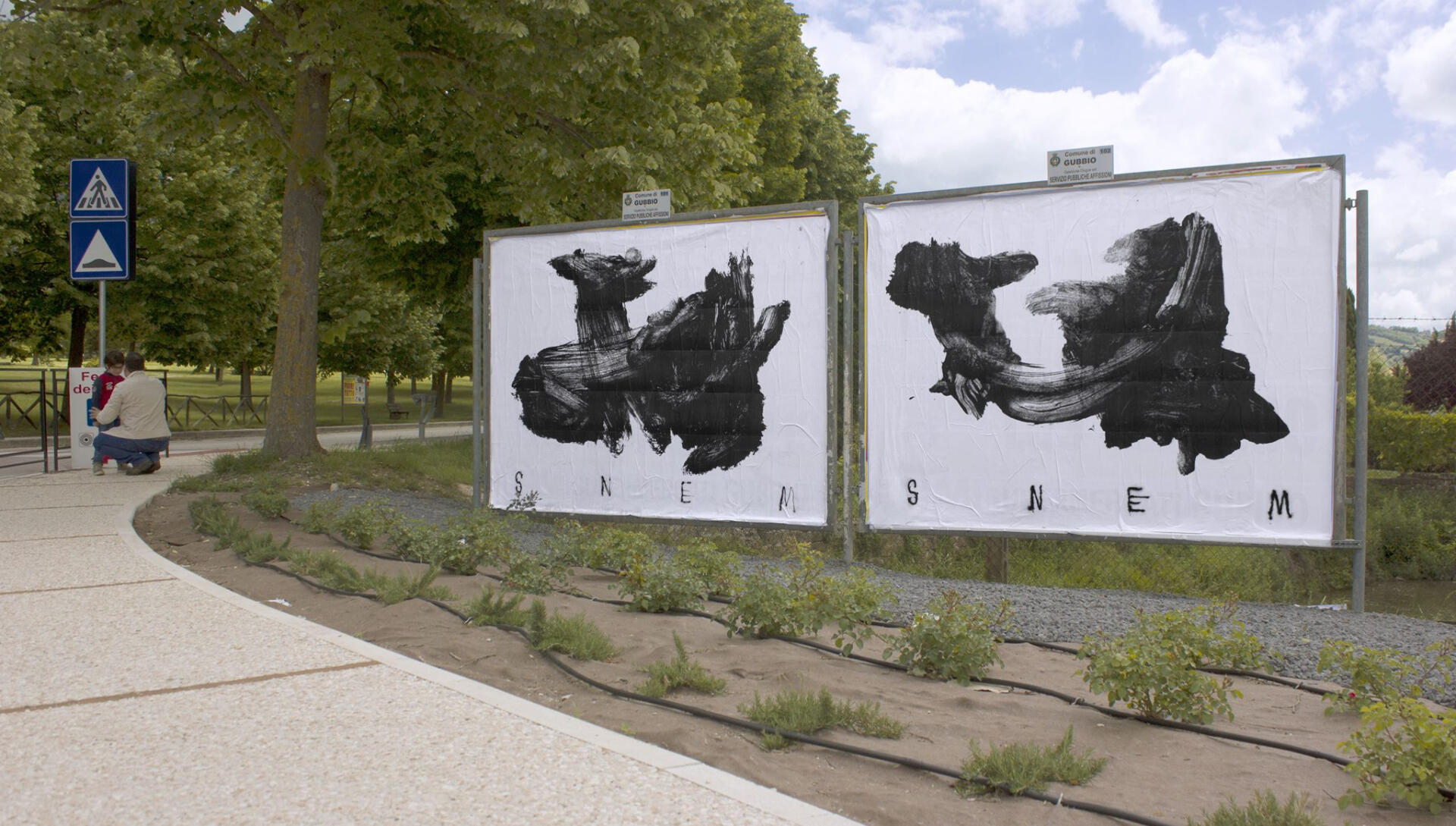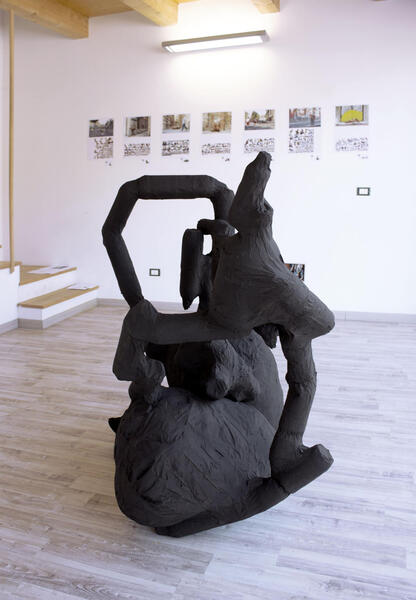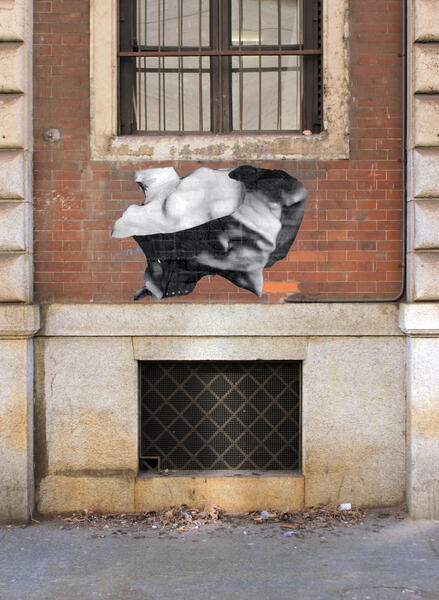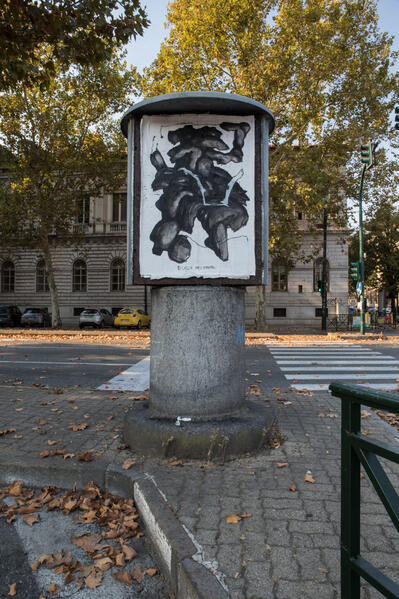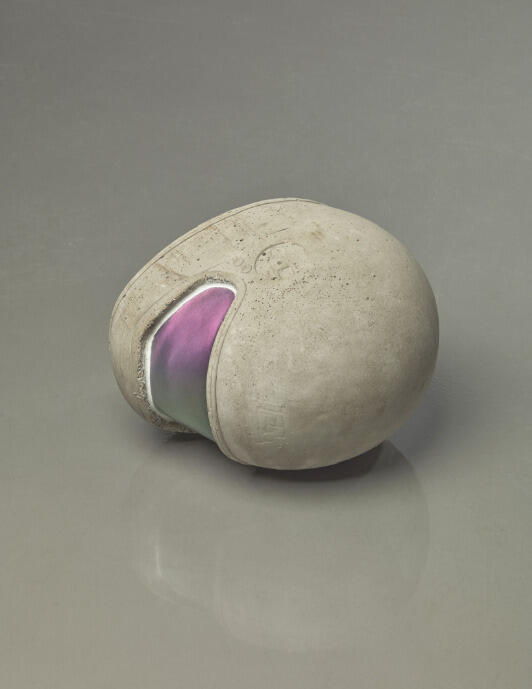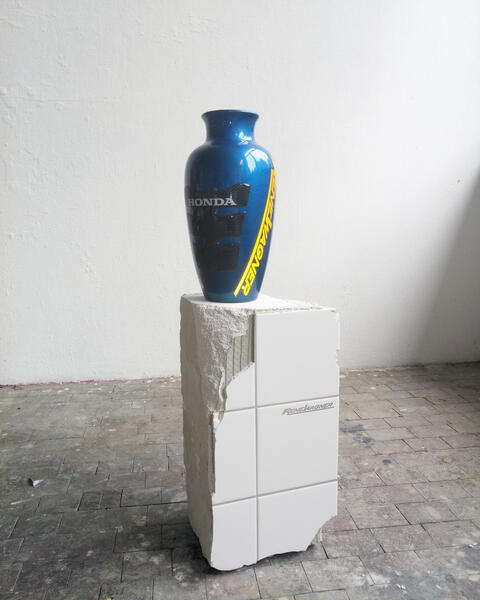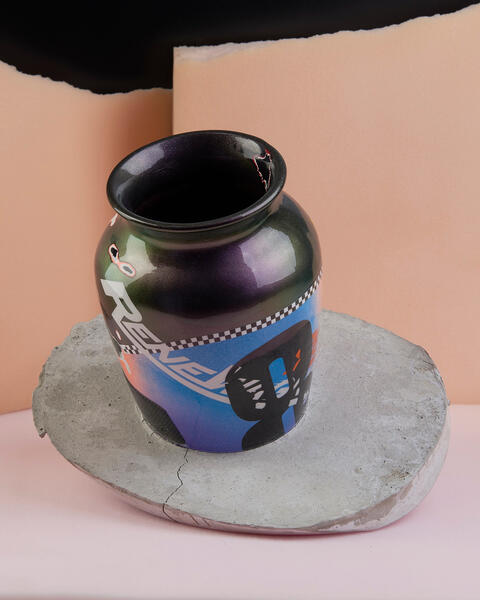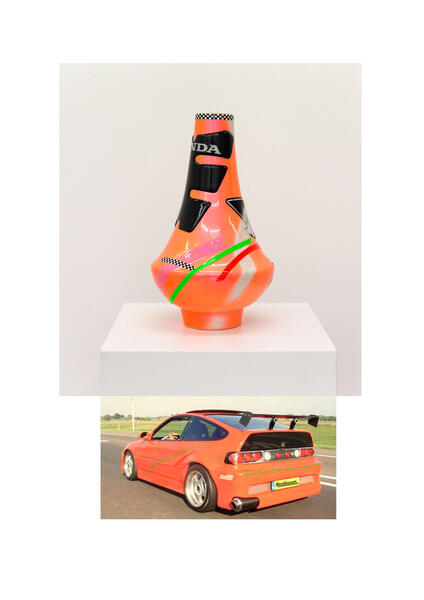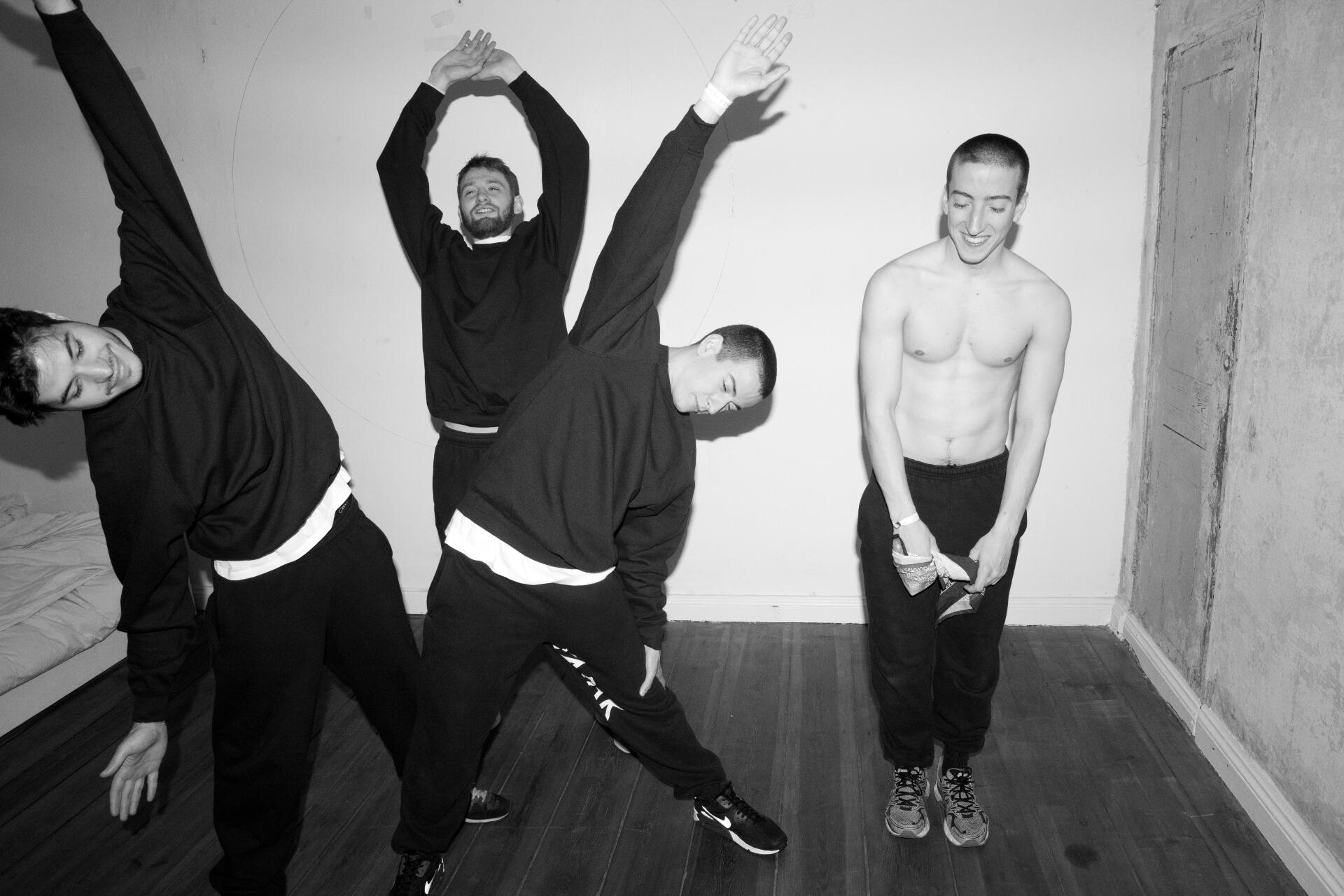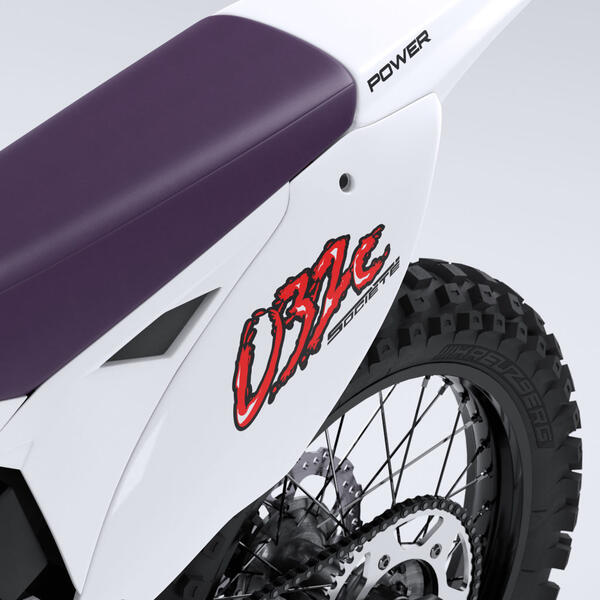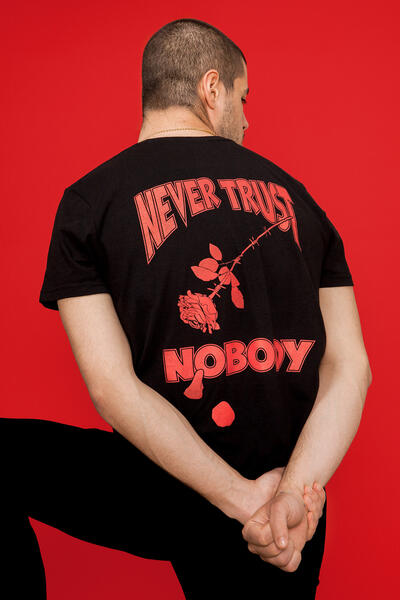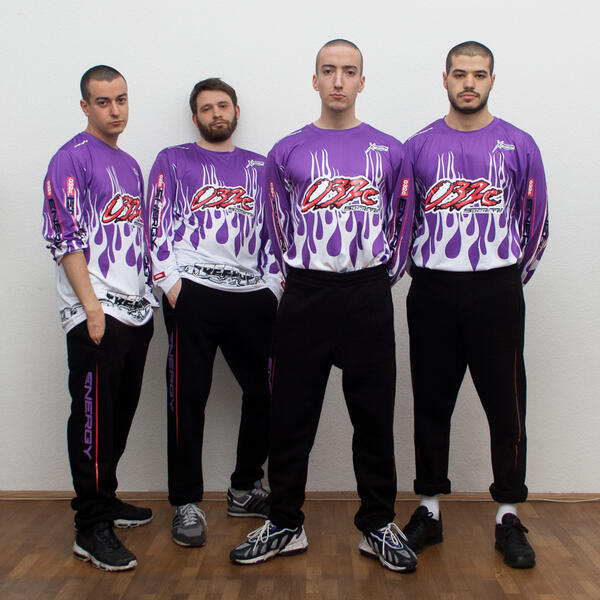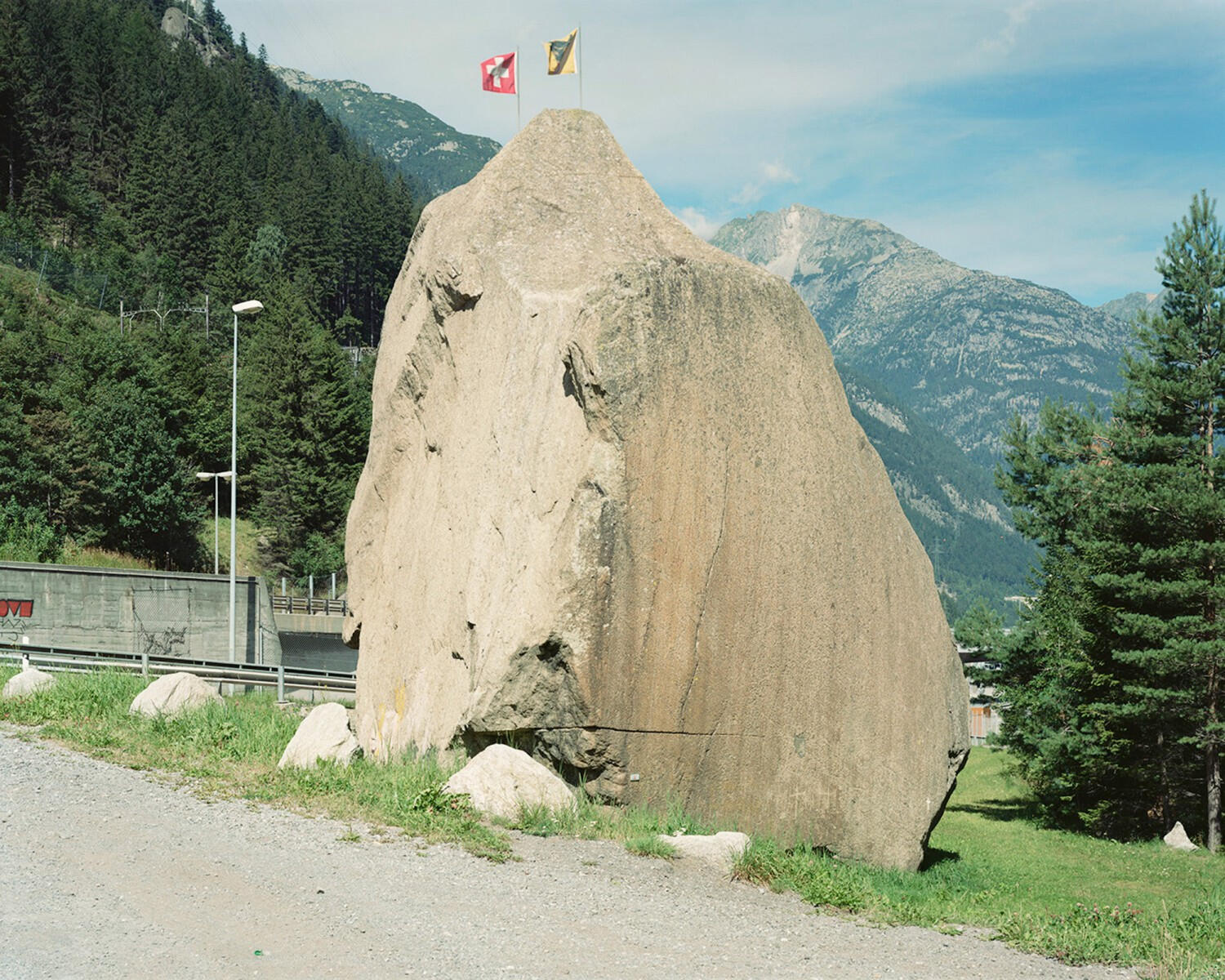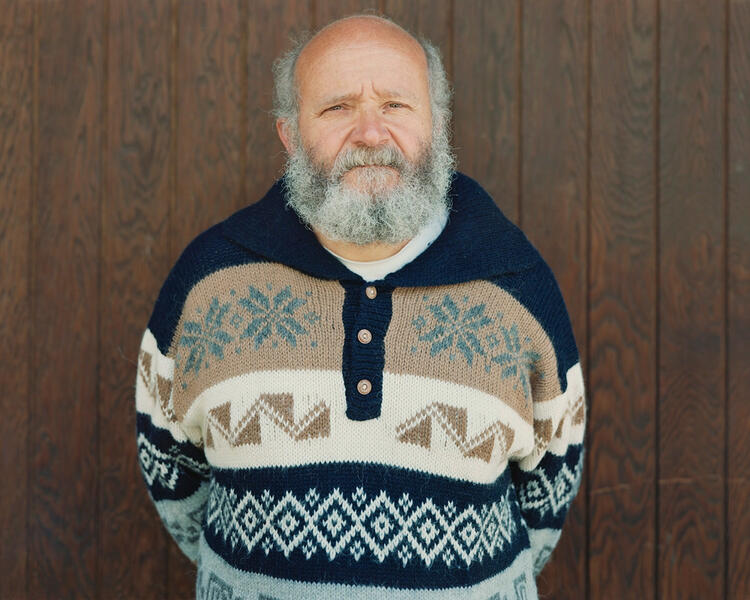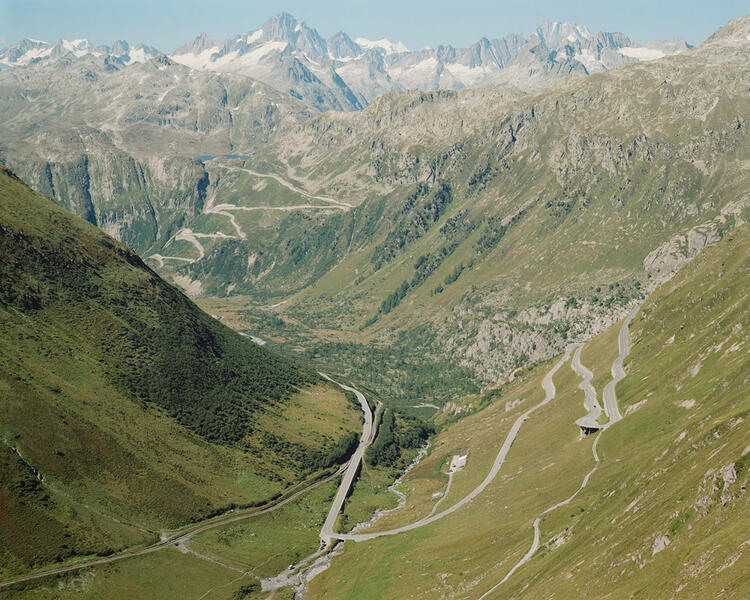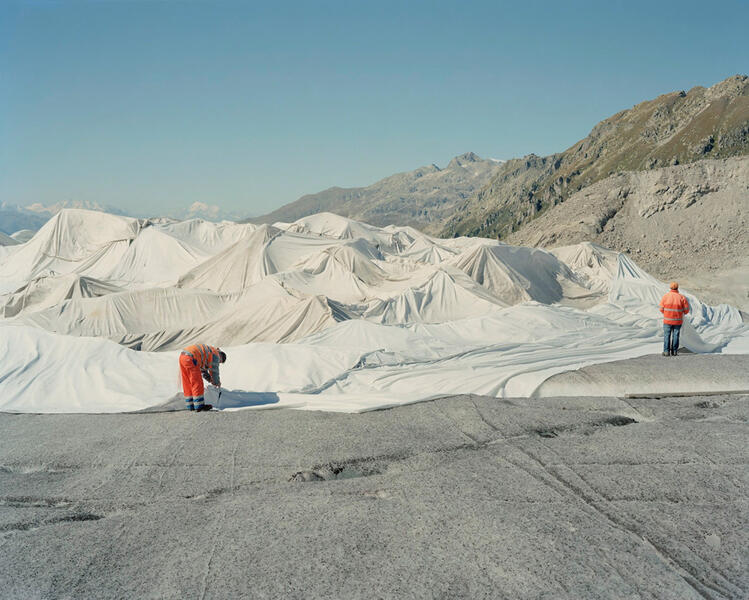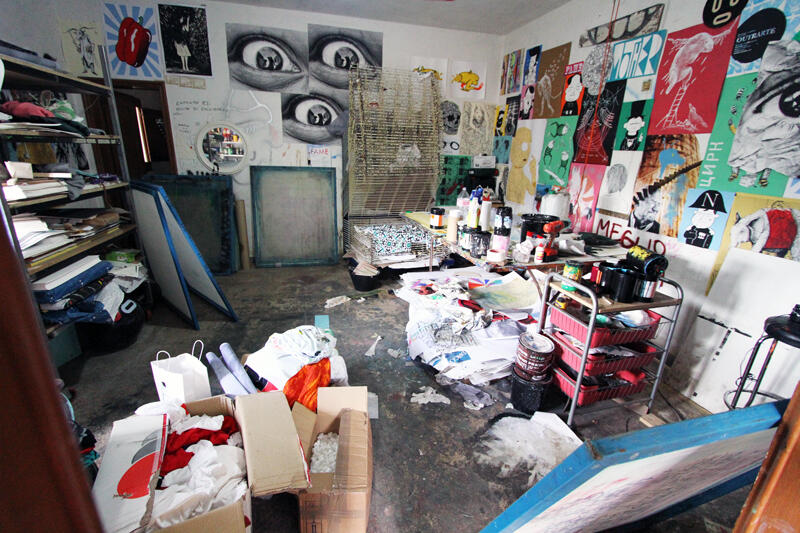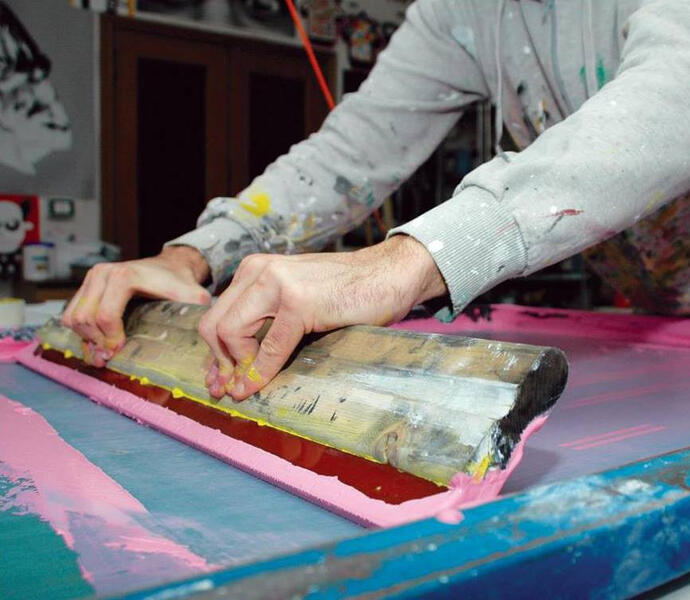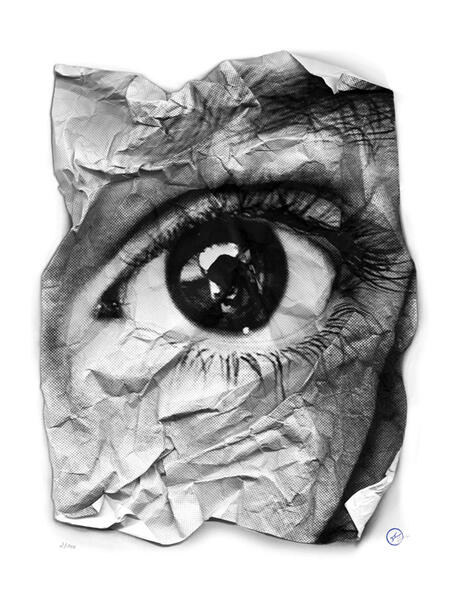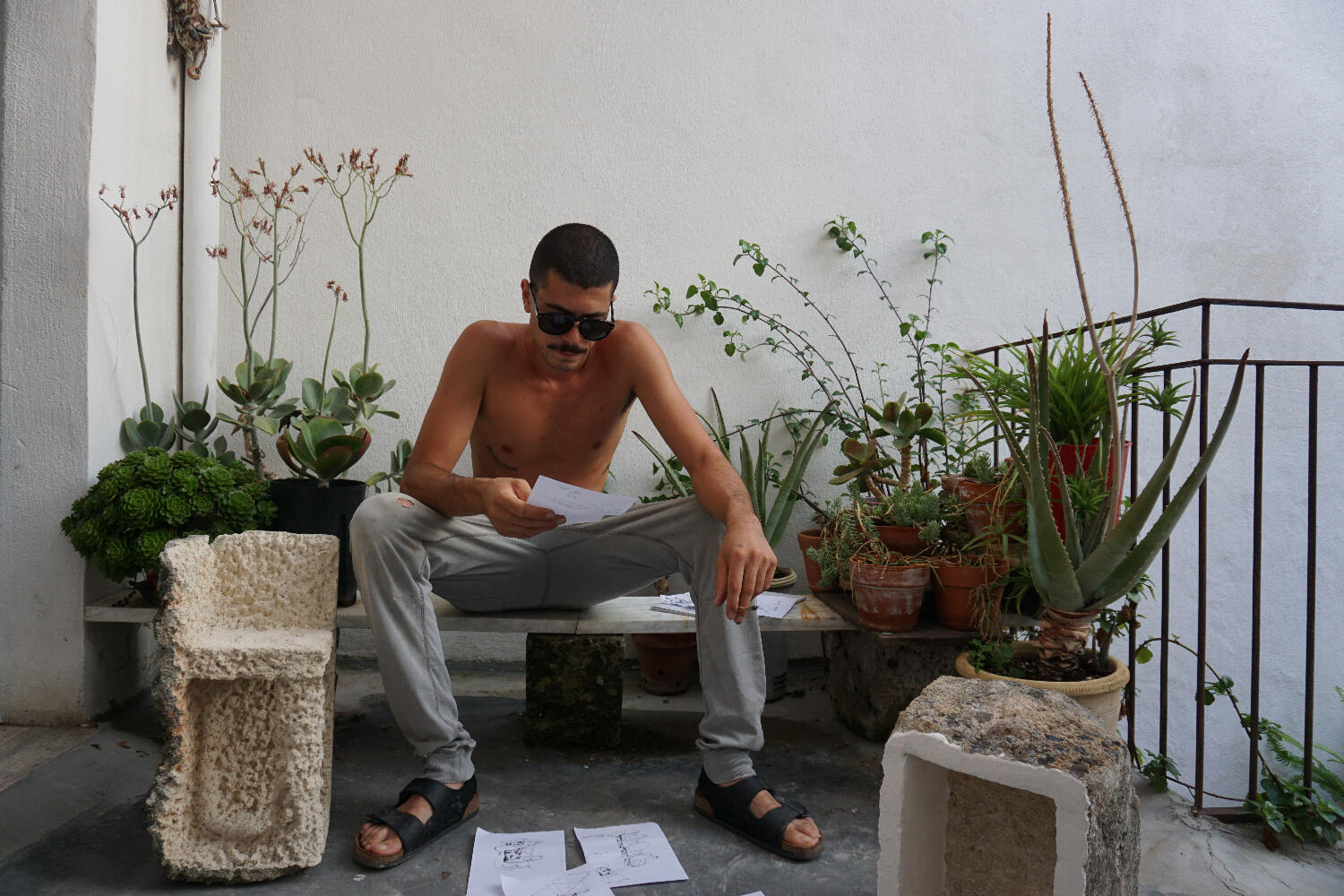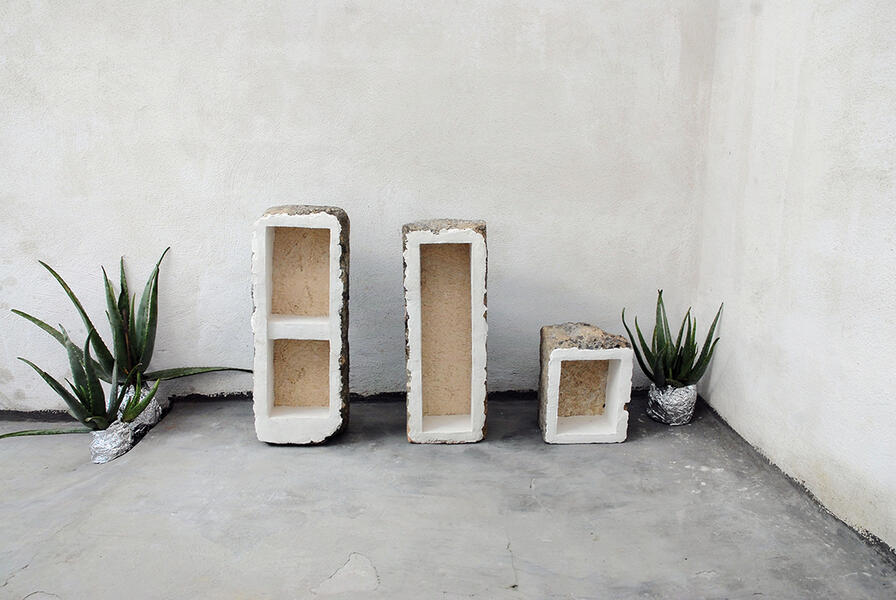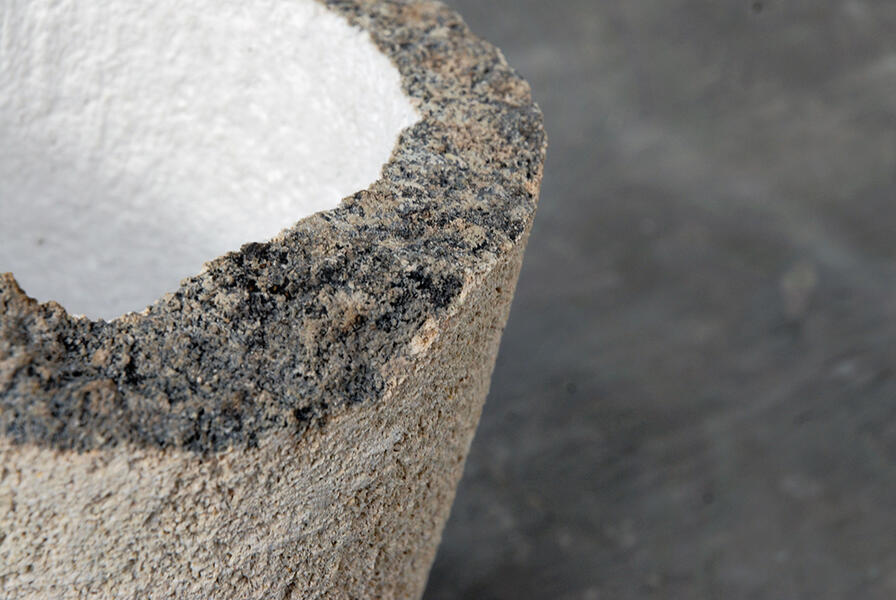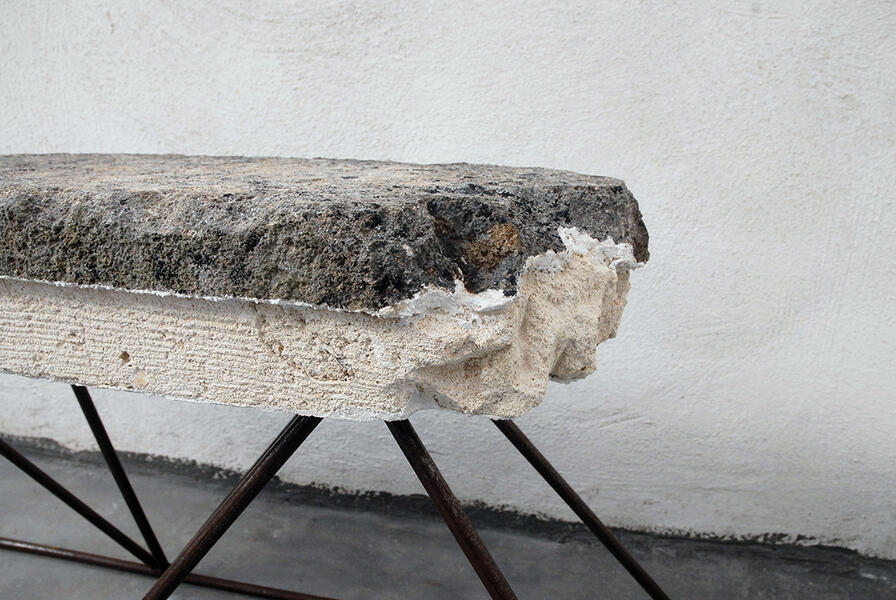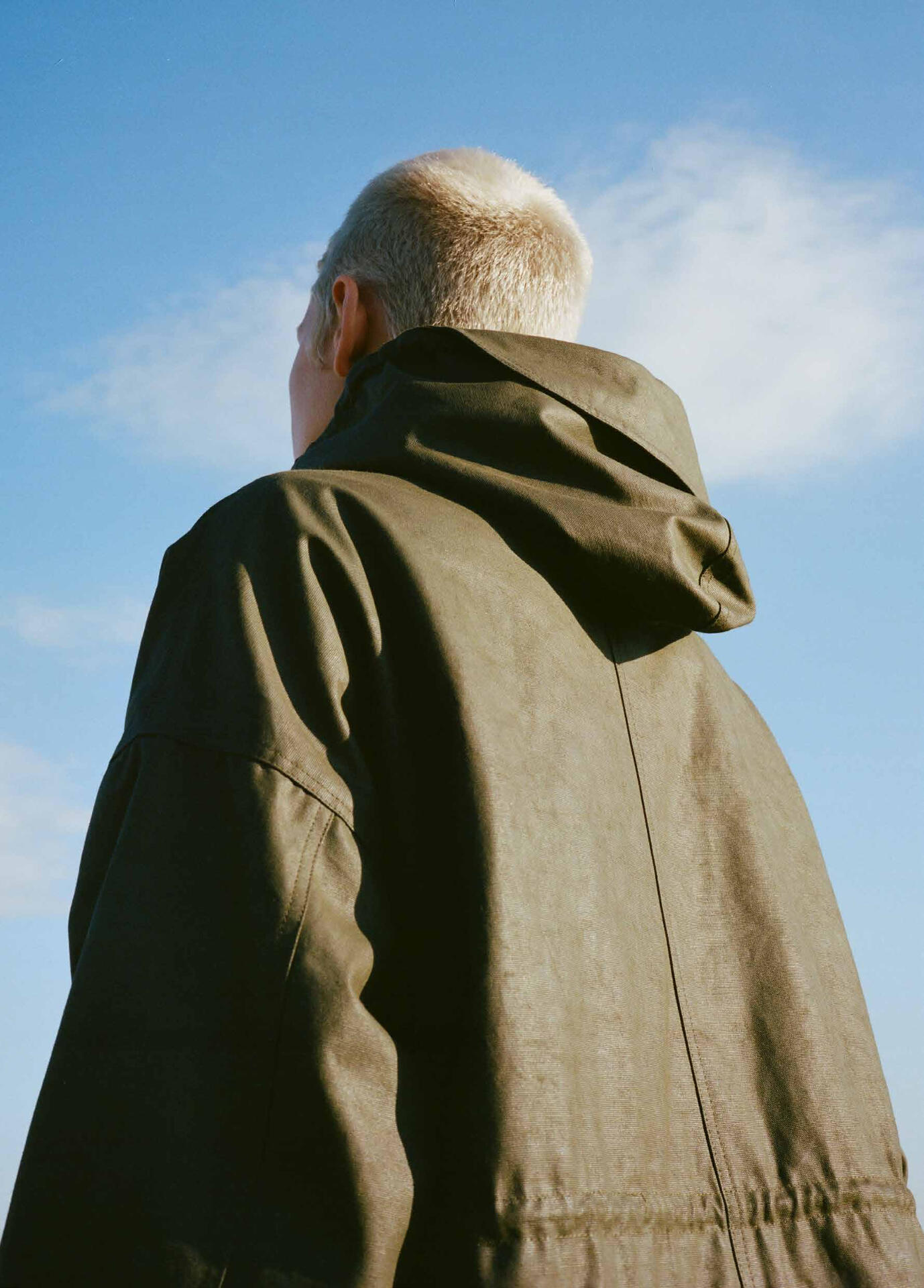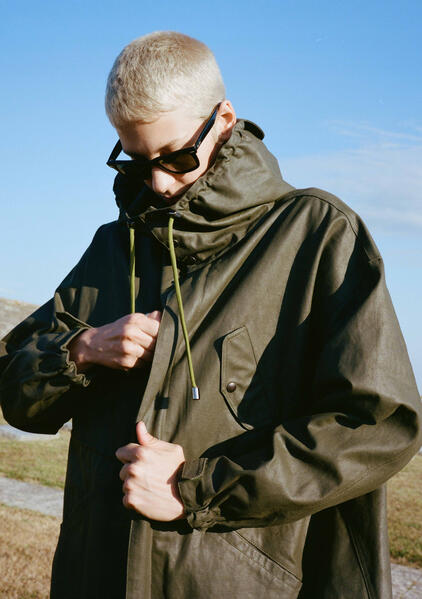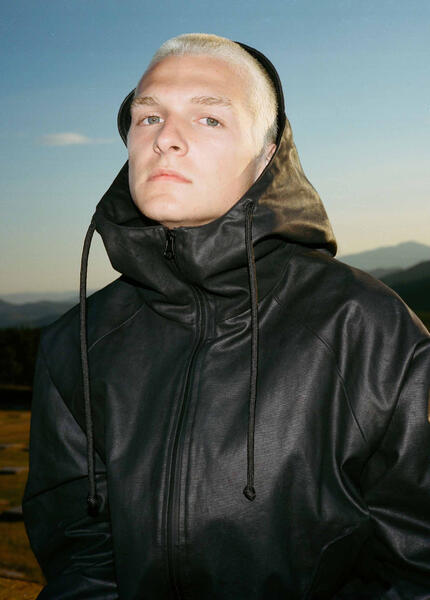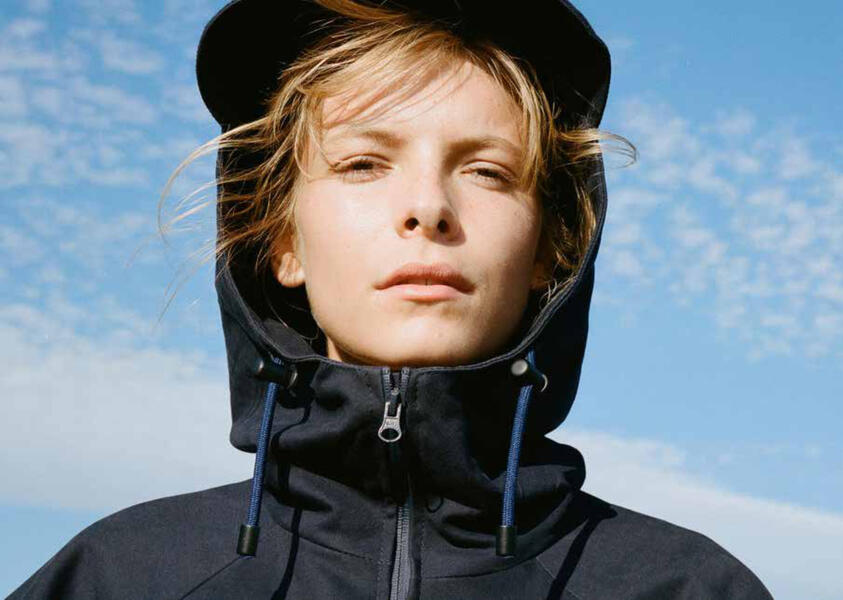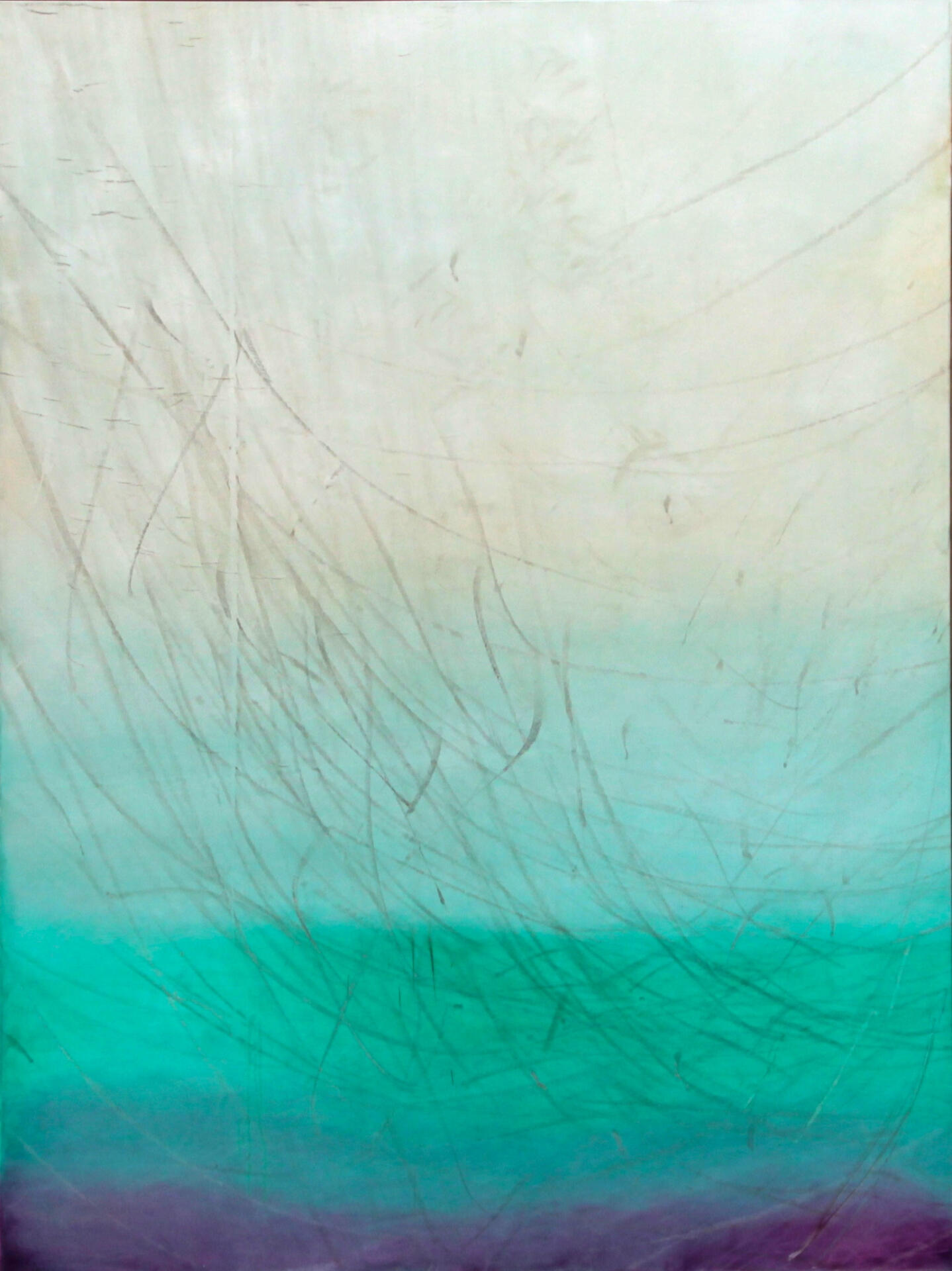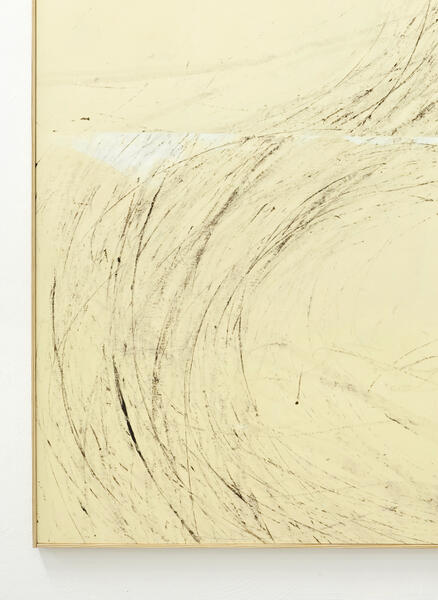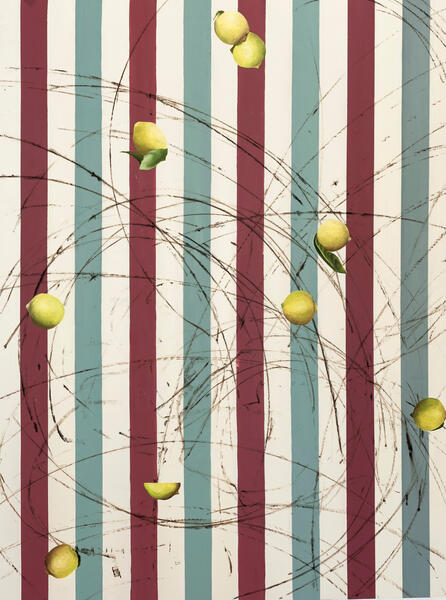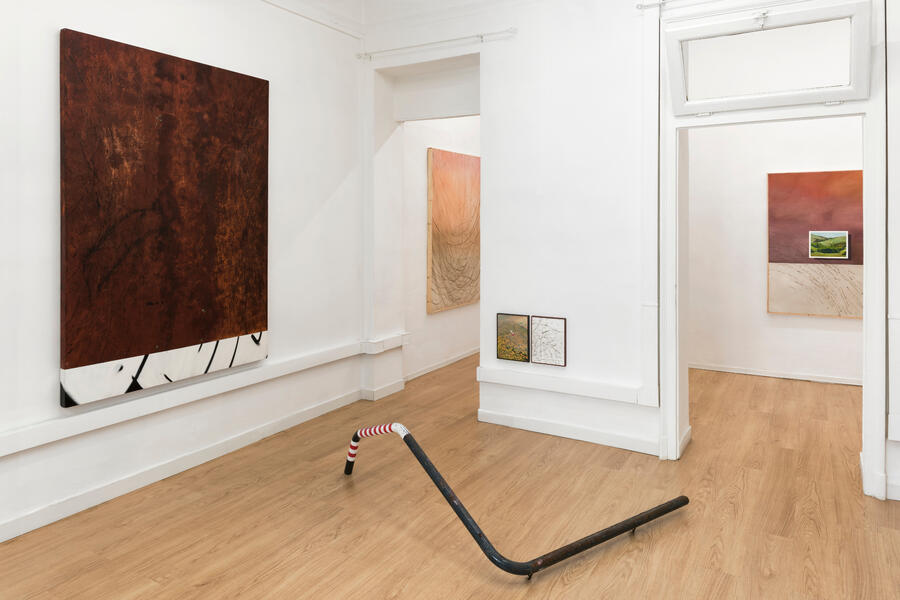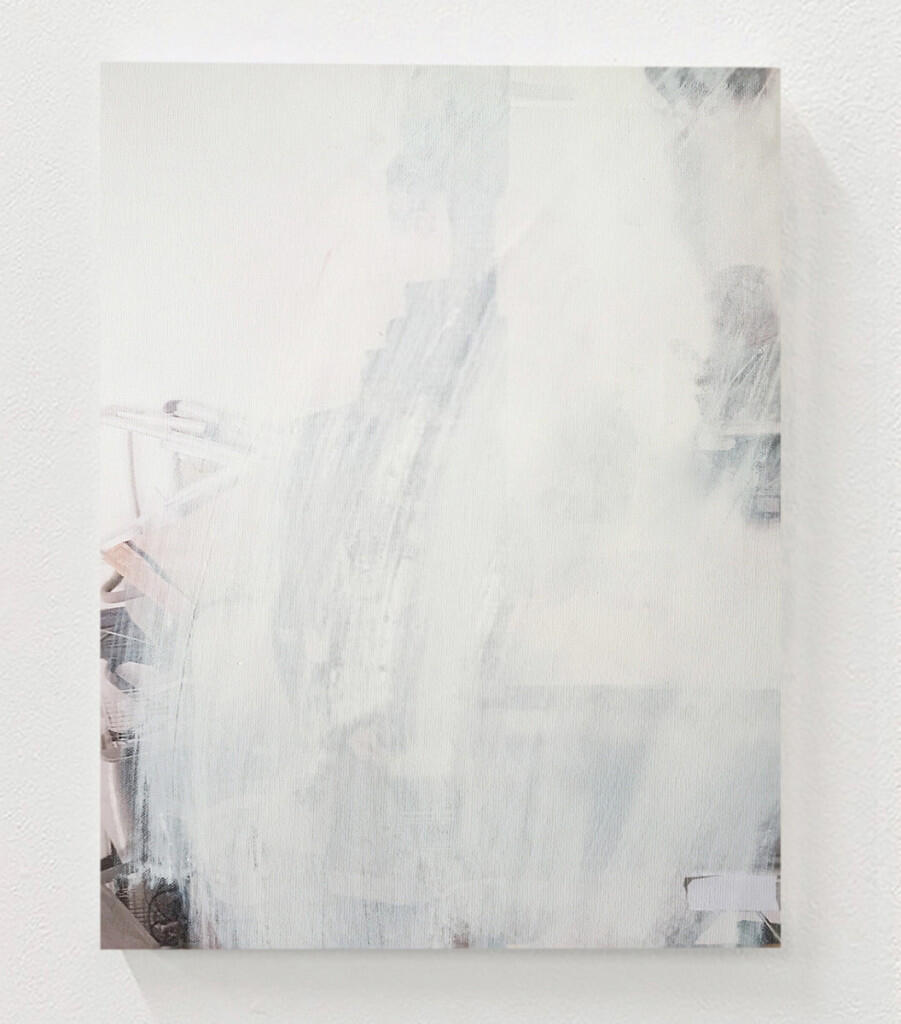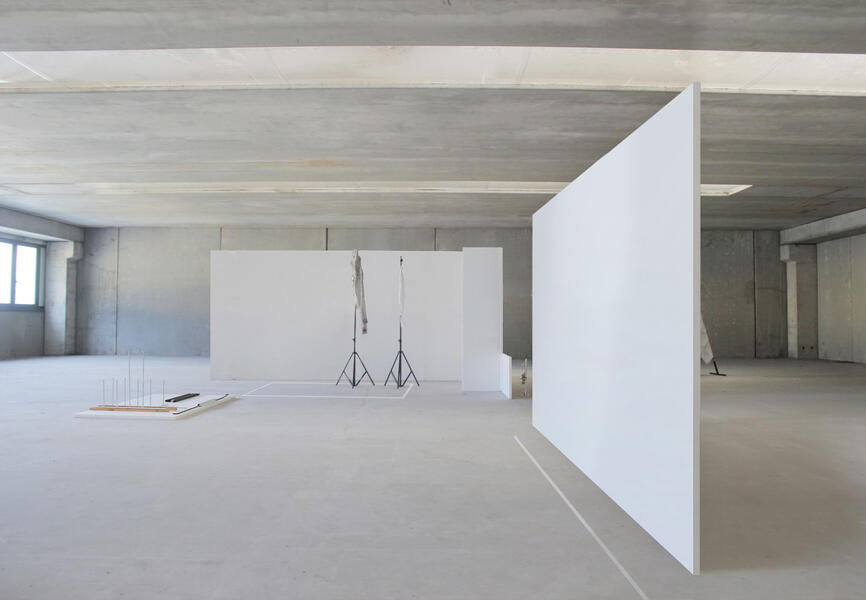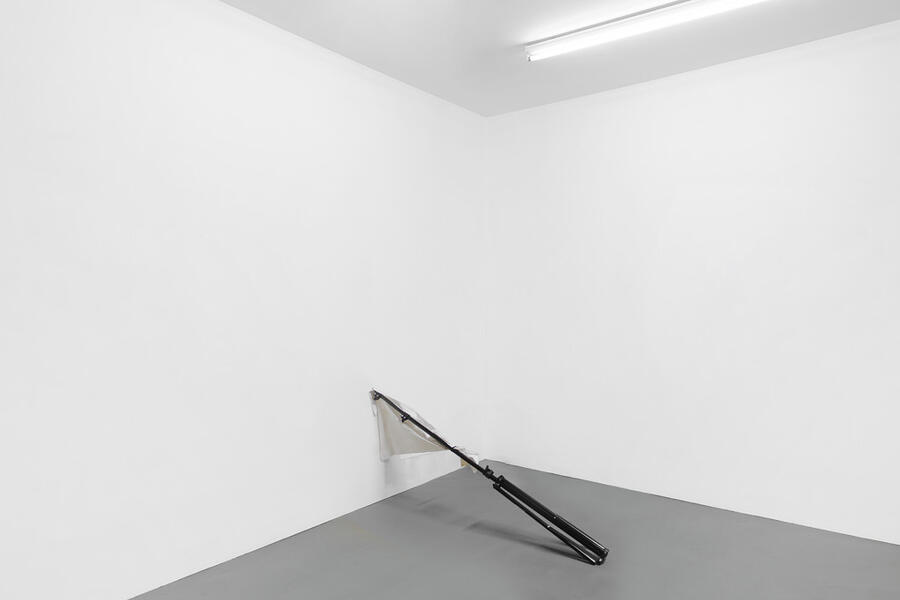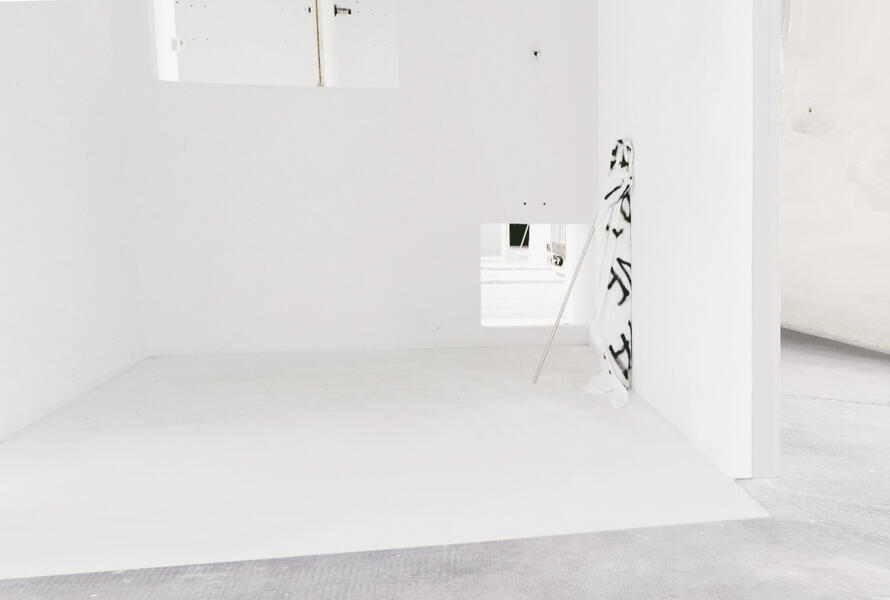DOMINIK
PLEASE, INTRODUCE YOURSELF.
My name is Dominik. I am an artist.
WHAT'S THE CREATIVE PROCESS BEHIND YOUR WRITING?WHAT INSPIRES IT?
I do pictures with text. They are open to interpretation. Inspiration I get from everything.
DON'T YOU THINK THAT USING OTHER LANGUAGES THAN ENGLISH COULD BE A LIMIT TO THE INTERPRETATION/UNDERSTANDING OF YOUR WORK?
Yes I user Differenz Language
SOME PICTURES SHOW YOU HOLDING A PIECE OF PAPER WHILE WRITING. SO I GUESS IT IS ALL PLANNED.
I use sometimes words that I wrote on paper. Mostly I write spontaneous text.
MAYBE MY WORK SURPRISE IN PUBLIC SPACE MORE THAN IN A NORMAL ART SPACE
DO YOU FIND ANY DIFFERENCES BETWEEN PAINTING IN THE STREETS OR IN A GALLERY? ALSO HOW DO YOU THINK PEOPLE REACT WHEN THEY SEE IT?
It's more or less the Same [painting] Outside or in Gallery. Maybe my work surprise in Public Space more than in a normal art space.
HAVE YOU EVER THOUGHT ABOUT USING OTHER TYPE OF MEDIA BESIDE THE SPRAY CAN IN YOUR ART?
I used Windows paint and Photoshop to Print on PVC. And I used a Spraygun to write on PVC.
TELL ME MORE ABOUT YOUR SIDE PROJECT DOMINIK.TATTOO.
I started to do hand poke tattoos on me and friends. After a while I started to tattoo with machine too. I travel to different cities to tattoo People. I do my own drawings.
YOU TEASED A CUSTOM BOOTLEG NIKE SWEATSHIRT ON YOUR INSTAGRAM. WHAT'S YOUR TAKE ON FASHION AND STREETWEAR IN GENERAL? IS THERE ANY PARTICULAR BRAND YOU FOLLOW OR WOULD LIKE TO COLLABORATE WITH?
There is not a brand I follow or collaborate with. The DOMINIKE logo is just fun for me and if people like it I am happy. Was just an idea I got spontaneous and I print it on shirts.
WHAT ARE YOUR GOALS AS A ARTIST IN THE NEXT FUTURE? ARE THERE ANY PROJECTS/EXHIBITIONS YOU ARE WORKING ON?
I don't know. I am not under pressure. But yes, I focus on new Works, Shows, tattoos and Shirt stuff.
THANK YOU, DOMINIK! IS THERE ANYTHING ELSE YOU WANT TO ADD?
Check out my shop
RAGAZZI NEI PARAGGI
PLEASE, INTRODUCE YOURSELF.
William: 29 years old, from Salerno (Italy). Photographer, video maker and editor-in-chief of a art and culture magazine. After an International Relations degree I've been travelling a lot, studied cinema in London and photography in Milan, where I now live and work.
Guido: 22 years old, from Sanremo. I studied cooking and worked for a year in Italy, Malaysia e England. I always had a passion for visual arts and fashion. Three years ago I decided to relocate in Milan to study e work in the photographic branch.
DO YOU THINK THAT THIS KIND OF EXPERIENCES, VERY DIFFERENT FROM YOUR JOB, CAN SOMEHOW HELP YOU IN IT?
They are life experiences that enriched us, for sure, however they did not influence our photographic work.
HOW DID YOU MET EACH OTHER?
We met two years ago while we were studying at the Italian Photography Institute in Milan. [It's been a] lighting strike.
YOU'RE NOT THE FIRST PHOTOGRAPHIC DUO BUT IT'S NEVER A PREDICTABLE COLLABORATION. WHAT ARE THE REASONS BEHIND IT? COMPLEMENTARITY, NEED FOR WORKING SURVEY...?
First of all we are great friends e we always helped each other in our standalone projects. We have different styles but it's exactly this diversity that contributes to make our works unique and complete at the same time: to be more clear, at the end of work each of has in its own camera the photo the other doesn't have. [Also] sometimes we have to produce photos and videos in a single project, so it's indispensable to work together.
DESCRIBE THE PROJECT "RAGAZZI NEI PARAGGI".
It's a project born by chance after we worked for a long time together during the fashion week of February/march 2017. At the beginning it had to be a collaboration to focus on backstage and street style. Instead, now we are including also non fashion week related works in the project.
WE HAVE DIFFERENT STYLES BUT IT’S EXACTLY THIS DIVERSITY THAT CONTRIBUTES TO MAKE OUR WORKS UNIQUE AND COMPLETE AT THE SAME TIME
WHY THIS NAME?
We don't like to take us too much seriously, so we looked for a name that played on irony and seemed nice. [It's kind of] between an Italian translation of Boyz 'n' the Hood and the name of an indie Italian band. We didn't want to fall in the trap of pretentious names.
FASHION ASIDE, THE PROJECTS LOOKS LIKE FOCUSING ON PEOPLE ALSO.
We are both portrait enthusiasts. We prefer to not linger too much on the fashion element but give space to the person.
FASHION AND PHOTOGRAPHY GO HAND IN HAND. DO YOU THINK PHOTOGRAPHY IS INFLUENCED BY FASHION OR VICECERSA?
Photography and fashion photography in particular are very much influenced by new trends. However sometimes an author can have such an strong visual impact that its photos to may influence the designers themselves. So yes, they go hand in hand.
WHAT ABOUT YOU? DO YOU ALWAYS IMPOSE YOUR OWN AESTHETIC OR TRY TO FIND A FEELING WITH THE BRAND/CLIENT?
We try to preserve our own aesthetic as much as possible, but also meeting the client needs. However, most of the times, the client itself contact us because it wants a product with our style.
DO YOU WORK ONLY BY COMMISSION OR INDEPENDENTLY TOO?
Both commissioned works by brands/magazines and personal projects or projects we decide to take part in.
HOW DO YOU ORGANIZE YOUR WORK?
In every shooting we like to play an active role in the planning, from the mood board to the casting till the location scouting. Then, during the shooting we have so many tools (digital, film, polaroid, vhs...) that we don't find it hard to alternate us in the shooting or filming. Even in post-production we usually work together.
WHAT'S YOUR DREAM COLLABORATION?
We'd like to collaborate with i-D, Dazed, AnOther, Vogue Italia, V Magazine and other magazines with this type of editorial line.
WHAT ARE THE BRANDS YOU LIKE THE MOST OR JUST FOLLOW?
We really like the high end streetwear and would willingly collaborate with: Gosha Rubichinski, Supreme, ader Error, Gucci Balenciaga, Vetements and Prada. We are not asking that much, uh?
FUTURE PROJECTS?
At the moment we are trying to open a creative studio with photographic set, to collaborate with our friends of this industry.
KAROL SUDOLSKI
PLEASE, INTRODUCE YOURSELF.
My name is Karol, my parents are polish and I was born in Poland too. When I was a kid we moved to Italy (in Valtellina) where I grew up on mountains. I moved to Milan to study and it later became my home.
WHAT ASPECTS OF 3D GRAPHICS DID YOU FALL IN LOVE WITH AND WHAT MADE YOU DECIDE TO MAKE IT YOUR ACTUAL JOB?
It was an accident, I'd never though I could end doing what I do now, especially the 3D thing. I grew up with video games, dreaming CGI cities from sci-fi movies or role playing games evocations. It was only after university, working with Cameranebbia guys for an installation contents, experimenting and trying to understand how to get the work done that we end up using photogrammetry. Later, I got fascinated by this thing and never left it anymore. At the moment, what I love at about the 3D stuff is the possibility to capture a piece of real world, obtain a high quality graphic texture and a likely mesh but featuring imperfections, sometimes unpredictable. It is this kind of equilibrium between realistic and digital that I think to be sexy and I always look for it.
AS A SELF TAUGHT, WHAT ARE PROS AND CONS IN THIS KIND OF APPROACH?
Learning by yourself make you feel free and independent but it takes more time and it's all about the effort you put in it. You can choose what to learn and what not but sometimes what you decide to skip is exactly what you need. You learn by failing but you don't replicate a scheme/recipe and so it's easier to move on other softwares which have different logics and interfaces.
WORKING A LOT WITH MUSIC, WOULD YOU CONSIDER WHAT YOU DO A VISUAL TRANSLATION OF SOUND OR A COMPLEMENTARY ELEMENT?
I would immediately say totally complementary. I don't think images (and this is generally speaking) can be substituted by music and viceversa. They say different things in different ways. As you say, I work a lot with music, I don't have a large music knowledge and I don't understand it. I also have big issues with rhythm and timing - when I was younger my bass guitar teacher suggested I should change my hobby. Associating images makes it easier for me to develop an emotional sprint toward music and interpretation, remembering it and noticing its shades. So is what I am doing a translation? Yes but very subjective and a very personal Rosetta Stone.
WHICH SOUND ELEMENTS INSPIRE YOU THE MOST OR YOU WORK BETTER WITH? HAVE YOU EVER FOUND YOURSELF REJECTING A COMMISSION BECAUSE YOU WHERE NOT FEELING THE MUSIC?
I prefer electronic and abstract sounds with water, weather and spacial references. A general dark feeling. But I also like to work with hard sounds, they're funny. I think music can't be separated from the person that generated it or that gives his/her name to i or from the imaginary that surrounds it. Considering that I suck in music, I have to listen to a track many times to tell if I like it or not. I don't remember any moment where I said no just because I wasn't feeling it. Rather, I often fall in love with music by working on it and beginning with a bit of distrust. Most of my rejections are due to the time that I don't have to work on a projects.
WOULD YOU LIKE TO TALK ABOUT YOUR CREATIVE PROCESS? HOW DO YOU APPROACH AND ANALYSE A PROJECT THAT NEEDS TO BE SIDED BY YOUR IMAGES?
When people ask me about this I always fear to look like a moron. The design spirit did not sediment in my body so I don't have a precise plan nor I am a big planner. I just go random rather than moving with an artistic sprint. A lot of ideas come while I am processing the point cloud. Later I cross them with what I feel or see. In the end it's just a matter of sensations and abstraction. My stuff doesn't mean anything. When I am working on a video, I always do it with Giorgio Calace, a photographer that knows about sounds. Another voice joining the conversation.
WOULD YOU LIKE TO TALK ABOUT YOUR 3D SCANNINGS? WHAT DO YOU THINK IT MAY ADD (OR TAKE AWAY) FROM YOUR WORK ON A CREATIVE LEVEL? I NOTICED YOU RARELY USE ABSTRACT FORMS. DO YOU EVER DO RESEARCHES ON ON PHYSICAL OBJECTS TO STUDY THEM AND LATER TRANSPOSE THEM IN A VIRTUAL ENVIRONMENT OR YOU JUST USE MEMORIES TO START FROM SCRATCH?
The photogrammetry is a type of 3D scanning that is made from a big quantity of photos of a static subject. These images are then processed by softwares that identify common points in the images, located in a 3D space, connect them in volumes and generate a surface. It's a process that I'm still fascinated by since the first time I experimented it. A good result depends on how much the model is able to stay still, on lights, on shadows and on the material that it is made of. Reflecting surfaces, for example, change appearance as you change your point of view, so it is theoretically impossible to make a photogrammetry of them. Anyway, sometimes impossible things generate errors, digital messes and fails that are great creative inputs. In a certain way, my working process is based on total randomness, it's about researching and fomenting the error, and later arranging. It's also about fail compositions and positive results that are in balance. That's one of the reasons why abstract forms are absent in my compositions. I always start from real objects, often characterized by the failure risk in the acquisition phase, things of which I like the form, the colours, the light (natural) or owned by people I know. Sometimes the model looks good from an objective point of view and it resembles the real one. Sometimes it's a nice mess that preserves all the original pieces but returns them distorted and crashed. That's how my 3D patterns gets generated, that's where key elements fit. It's a balance between good and bad scanning results. One more reason why there are no abstract forms or clean geometries is because I don't like them. I have a very dirty aesthetic, fragmented and confused. I'm not interested in precise and correct models and I’m not going to learn how to make them (obviously I am totally unable to do them now).
WHAT HELPS YOU FOCUSING YOUR CREATIVITY?
Nothing. I have big concentration issues. Having anxiety pushes me to sit in front of a pc but my anxiety also paralyses me. I can say the same about company, coffee and blunts. During crisis and out of focus moments I ride my bike and reorganise my place, empty my drawer or decant plants.
VISUALS ARE OFTEN SEEN AS A FILLER, A GENERIC BACKGROUND INTERRUPTED BY THE LIGHTS POINTED ON THE ARTIST. I HOPE THEY WILL GET A BIGGER RELEVANCE OR BETTER CONSIDERATION
WHY, IN YOUR OPINION, THERE IS ALWAYS MORE REQUEST FOR VISUALS NOWADAYS?
I am happy about that but I can't really explain it. Nowadays it's easier, for sure, to have video scenographies and I think we need and have an obsession for images that make us put them everywhere. Anyway,well done visuals, connected with the music are able to match, exalt and amplify the message, creating a particular audiovisual experience.
HOW DO YOU THINK (OR HOPE) THIS SECTOR WILL EVOLVE, IN THE NEXT YEARS, IN TERMS OF OF CONTENTS, THEMES BUT ALSO CREATIVE APPROACH AND AUDIENCE RESPONSE?
Visuals works, so I hope there will always be a bigger investment for what concerns creating contents but also equipments that are able to produce visuals in clubs. I hope in a new direction toward visual shows: visuals are often seen as a filler, a generic background interrupted by the lights pointed on the artist. I hope they will get a bigger relevance or better consideration.
FUTURE PROJECTS?
Making something mine. It's a commitment more than a project. Being very inattentive and fearing free time, I find it hard to have some time to work just for myself and I usually put my ideas in other people works.
MAX KESTELOOT
PLEASE, INTRODUCE YOURSELF.
Hi, I’m Max Kesteloot. I live and work in Oostende and Gent, Belgium.
HOW DID YOU GET IN TOUCH WITH PHOTOGRAPHY?
I guess I was always interested in taking photographs. Actually I think everybody does, especially nowadays - it’s within everyone’s reach! For me it must have been around 2003 -when I started graffiti writing- that the actual need of taking a good photograph in not so ideal situations presented itself. From that moment on photography has always been there. Whether it was to keep a memory from a trip or to frame a situation that I liked.
JUDGING BY YOUR WORK IT LOOKS LIKE MOST OF YOUR SHOTS ARE VERY RELAXED AND PONDERED, HOW MUCH DOES IT TAKE TO YOU TO TAKE A PHOTOGRAPH (FROM CHOOSING THE SUBJECT TO GETTING THE SHOT)? CAN YOU DESCRIBE YOUR PROCESS?
I actually don’t consider myself as being a photographer, you know... I just really like to observe things, and to capture these observations I take a photograph of it. Because it’s actually an easy medium. I work really strict. It could easily take about half an hour before I actually take a photo of something that I like. Think twice, shoot once. I work really over controlled. I’m a bit neurotic. But it’s okay, I like it like that. It’s a calm and quiet process full of elements that are logical to manipulate. Such as light & focus. Maybe that’s the reason why there’s not too much people in my work. The real protagonists are rather a plasti bottle or a fence. - I guess they’re much easier to control and they don’t move around. This gives me the opportunity to really take my time.
RECENTLY, YOU DECIDED TO INTEGRATE YOUR PHOTOGRAPHY WITH PAINTING. WHAT KIND OF RESEARCH/EXPERIMENTATION IS BEHIND IT?
It’s been around for quite some time tough. I feel the need to move further then just being an observator. But because I don’t change anything to these ‘as found’ situations this is actually very hard. It came to me right after my first show in 2014, Nowhere - part 1, KERK - Gent (BE), where I made really large scaled prints of photographs I took that year. These images were then glued onto the exhibition space’s walls. When the exhibition was over I wanted to recover the prints and started to recollect them. By doing this some fragments of the images suddenly became isolated. Today I’m still working in relation to these (and other, more recent) fragments. I’m taking larger scaled prints of images that I made very carefully and controlled into a final finished image. After laying them out on the floor I -completely against my nature- start to tear parts of them, which will then later on be recomposed into a new image. This gives me the freedom to interact with the reality of the ‘as found’ situations without having to change the setting at that moment. The part where spray paint, brush and acrylics comes in is actually just a method to precisely re-frame / crop the final result as one would do in Photoshop or by using a passepartout.
YOU'RE ALSO WORKING IN ARCHITECTURE, HOW DO YOU THINK THIS PROFESSION CAN BE RELATED TO PHOTOGRAPHY? HOW DOES IT INFLUENCE YOUR WORK?
Without wanting to go to deeply into the subject of the relation and difference between architecture and art. Okay, just this; I believe that architecture is as much about observing the context as it is for art or photography. Or for film, writing etc...
WOULD YOU CONSIDER SHOOTING LIKE A WAY TO REMEMBER AND KEEP A MEMORY OF THINGS FOR THE FUTURE OR MORE TO OBSERVE AND ANALYSE THEM IN THE PRESENT?
If there’s one thing I’ve learned trough architecture is that time is a very important actor in the process of making. One of the fragments could easily be a summary of a timespan of 2 to 3 years. I almost need to forget about an image, before being able to be surprised about the details again afterwards. Because I take a lot of time to actually make a photograph I think I’m completely 100 procent aware of what’s happening at that moment. I think it’s just about finding something beautiful, interesting or stupid at a point in time and there’s the need to collect that image. Maybe it’s because I have a really bad memory, so if I wouldn’t have framed that image I would forget about it later on.
SINCE THE MAIN THEME OF YOUR WORK IS REPRESENTED BY THE ABSENCE, COULD YOU TELL ME WHAT FASCINATES YOU ABOUT THIS SENSATION? WHAT IS YOUR IDEA OF “ABSENCE”?
I never felt that my work is about absence. Au contraire - I’d rather say it’s about presence. As once said by the guys over at GAFPA “Max's work develops around the paradox of the apparent absence of a subject in my images. That this gives every detail in his work the status of context.” I think I finally start to understand what they actually meant by that.
I DON’T GO AND LOOK FOR SPECIFIC THINGS. THERE’S ALWAYS THINGS AROUND THAT ARE EITHER BRILLIANT OR STUPID ENOUGH TO BE WORTH LOOKING AT.
WHAT ARE THE OTHER ASPECTS OF A SUBJECT THAT ATTRACT YOU? WHAT DO YOU LOOK FOR WHILE YOU'RE ON THE STREETS?
For me it’s absolutely luxurious, but also scarce (but isn’t that how it goes with luxurious things?) being able to walk around in a place when the only purpose is to have a good look around. I don’t go and look for specific things. There’s always things around that are either brilliant or stupid enough to be worth looking at.
TELL ME ABOUT YOUR EXPERIENCE AS A TEACHER, IS IT ANYHOW INFLUENCED BY YOUR WORK (BOTH YOUR WORK IN ARCHITECTURE AND ART) AND VICE VERSA?
Of course it’s obvious that teaching is working both ways. You give to the students - you take from the students. That’s something that I could have expected when starting to teach. The other thing - which is still quite obvious - is that my own work is implemented in the courses I give. However what I didn’t expect is the fact that when I’m being obliged to actually frame or bundle my thoughts or work method, and having to explain that to around 100 students; that it actually helps to set out a system for my own work to evolve in! It’s a bit like this interview. I wanted to keep it light and comprehensible like the interview Dominik did for UNDRSTND. (- he’s the best!) But I can’t. Being forced to give answers on questions you never really thought about - or reflecting on things that you normally do so spontaneously. It suddenly puts a thumb on things. Maybe that’s very much related to my work and it’s method. Cropping images or thoughts into newly composed images that suddenly exist from the moment I say it’s ready and done. - Sounds a bit strange, no?
FUTURE PROJECTS?
I’m really looking forward towards the artist residency I got offered by the people from Museum Dhondt-Dhaenens at Juliaan Lampens’ Woning Vanwassenhove in Ghent (BE) end of January 2019. And summer holidays, I love those!
I really enjoyed writing the book SPOT SPOTS - Prologue due to circumstances as well as making the accompanying movie. There’s something really satisfying about making the exact same work in two different medias with a different outcome. It’s nice to be able to rediscover small similarities. - so I guess I’ll also be trying to make a new film in the future.
NIC PARANOIA
PLEASE, INTRODUCE YOURSELF.
My name is Nic, I'm 20 years old and I'm a visual designer (or cybernetic drug addict). My childhood allowed me to receive strong influences from 90s culture. I am grateful to my past as a die hard comic reader, it still influences my work nowadays.
HOW DID YOU GET INTO GRAPHIC DESIGN?
It's the same vicious circle: first comics, art and visual communication next and graphics at last.
WHAT IS GRAPHIC DESIGN ROLE IN EVERYDAY LIFE, NOWADAYS?
With the quantity of informations we get daily, the quality is definitely stepped back and not just in the graphic design field. Nowadays everyone can learn to use photoshop without even getting out of the bedroom. We're all getting better. What really makes the difference is the personal taste, like how your influences may contaminate your way to communicate. The audience must be able to "travel" [with your work].
WHAT REALLY MAKES THE DIFFERENCE IS THE PERSONAL TASTE, LIKE HOW YOUR INFLUENCES MAY CONTAMINATE YOUR WAY TO COMMUNICATE
HOW DO YOU APPROACH A NEW PROJECT? WHAT TYPE OF FEELINGS, THEMES AND EMOTIONS ARE YOU TRYING TO ESTABLISH TO CONNECT WITH VIEWERS?
I think it's important to never limit yourself, never self impose borderlines, the author in the first one who must be happy with is work. I usually prefer non conventional approaches: the more is the impression, the more will be the suggestion for the viewer. Sometimes I get asked the meaning of a visual and I'm like: "Shit, you have to tell me that!". I don't want to be cryptic but everyone, in it's own, can travel with his own mind. What I see is no more right or wrong than what someone else can see.
DO YOU HAVE A PREFERRED ICONOGRAPHY THAT YOU USE TO GET INSPIRED?
I take a lot from my experience, everything I lived, heared, read, ate, loved and feared. My purpose is to create inputs for the viewers, which is not so easy in a world where everyone is craving for attention. The "how to do it" is always unknown but the purpose is always the same.
CAN YOU TELL ME ABOUT YOUR PROJECT "SUGGESTIONS"?
"Suggestions" is a project presented in collaboration with UNOTRE friends club and it essentially develops on the juxtaposition of images that may arouse different emotions for who's watching. They are contrasting images that have no unique interpretation, or to batter say: there's my interpretation but everything is based on people experience and what they can remind you and the sensations they can provoke. They are inputs as I said before.
I NOTICED YOU USE INSTAGRAM STRICTLY TO PROMOTE YOUR WORK, AOVIDING TO GIVE DETAILS ABOUT YOUR LIFE OR PERSONAL FACTS. WOULD TELL ME YOUR RELATIONSHIP WITH THIS PLATFORM AND YOUR THOUGHTS ABOUT SOCIAL MEDIA IN GENERAL?
Like to use instagram as a showcase for my works, from which you can anyway get a glimpse of my personality. People close to me know that, sometimes a graphic can come out from a photo we took together for fun or from something that somebody said. Anyway I prefer to focus on my work rather than posting about my personal life facts, since instagram is not real life. Sometimes it annoys me the continuous adding of new functionality that this platform gets, because that brings you adapt your contents to new formats to fit this new functions. Sometimes even changing them. Social medias are great but the quality must stay above quantity and you don't have to indulge into "like catching" contents that may distract from the real essence of your work.
WORKING WITH SO MANY BRANDS AND THEIR COMMUNICATION, IS THERE SOMETHING IN TODAYS PANORAMA THAT YOU FEEL CLOSE TO YOUR PHILOSOPHY OR STYLE?
I like brands that are able to build a strong imaginary around their products and are not just selling a logo, it should be the number one rule for the market but many of them don't get it and only a few make it to create their own audience. At the moment I am following Rayonvert and United Standard, for example, that may be unknown to a lot of people but have their own niche of public anyway. People who get their philosophy and stick with it.
FROM THE MOMENT THAT A LOT OF YOUR WORKS ARE MUSIC RELATED, WOULD YOU LIKE TO TALK ABOUT ITS ROLE IN YOUR WORK? WHAT ARE THE GENRES THAT YOU LISTEN OR INSPIRE YOU THE MOST?
I work 8 hours a day, mostly with my headphones on,. It's clear that many tickles come from music. I listen to everything, a lot of techno lately. It makes me trip.
FUTURE PROJECTS?
My next project is named "VUVUVU". All new graphics. New collaborations, each one of them with a different artist. It will be something bigger than what I did since now.
BRAM VANDERBEKE
PLEASE, INTRODUCE YOURSELF.
My name is Bram Vanderbeke, I am a Belgian designer based in Ghent, and graduated from the Design Academy in Eindhoven(nl) in 2016. My work has a very architectural and monumental form language, and I like to play with materials, form and functionality of an object. Together with 5 other Belgian designers I am also a member of the BRUT collective.
HOW DID GET IN TOUCH WITH THE DESIGN WORLD?
As a kid I always wanted to become a brick layer just like my grandfather. I was always making things, and went to a technical school to learn all the basics about wood and construction works. This urge of wanting to make things brought me to Design Academy Eindhoven where I was encouraged to go to workshops and experiment with different materials and techniques.
MATERIAL IS INDEED THE LEADING FEATURE OF YOUR WORK, WHAT'S YOUR RELATIONSHIP WITH IT? WHAT ASPECTS OF A MATERIAL ATTRACTS YOU THE MOST?
I like to play with materials and form, I like to see what I can construct out of certain materials or material connections. I find it interesting to give basic materials a new, sometimes unexpected, texture, in order to give more value to the material. I often make a lot of samples where I try different coatings or treatments on certain materials. My ‘Stackable Stools’ are made out of a black mdf with a manual applied coating on top, in order to give more depth to the material. The concrete surface of my ‘New Primitives’ collection is manually sculpted, and treated with many layers that create an unknown texture in the concrete.
AESTHETIC AND EXPERIMENTATION TAKES THE UPPER HAND OVER FUNCTIONALITY IN YOUR OBJECTS. SINCE COMING FROM A DESIGN SCHOOL, HAVE YOU EVER BEEN CRITICISED FOR THAT?
My works might be very sculptural but I believe that each work has a certain function. Next to classical functions like sitting or storing I also see emotional, spatial or guiding functions in my work. During my education at the Design Academy my teachers always motivated me to start to play with forms, materials and connections without always being too restricted by what it had to become. This gave me the freedom to develop my own form language, and let my objects adapt their function to the context where they are placed.
MY WORKS MIGHT BE VERY SCULPTURAL BUT I BELIEVE THAT EACH WORK HAS A CERTAIN FUNCTION. NEXT TO CLASSICAL FUNCTIONS LIKE SITTING OR STORING I ALSO SEE EMOTIONAL, SPATIAL OR GUIDING FUNCTIONS IN MY WORK.
ANYWAY, TALKING ABOUT FUNCTIONALITY, SOMETIMES IT LOOKS LIKE YOUR OBJECTS ARE SO PRIMITIVE, THE BENCHES IN PARTICULAR, THAT I HAD THE FEELING THAT YOU CAN UNDERSTAND THEIR FUNCTION BY JUST LOOKING AT THEM. WOULD YOU SAY THAT PRIMITIVISM IS KIND OF SYNONYMOUS OF ESSENTIAL IN TERMS OF FUNCTIONALITY IN YOUR WORK?
My ‘New Primitives’ collection indeed has this very rough essential aesthetics. The Dutch Invertuals collective described me once as “a director of spaces whose work is situated on the fine line between intuition and functionality”. I believe that these primitive/essential forms come out of my intuitive decisions, and sometimes it is very clear which function these objects or forms could take.
THE BORDER LINE BETWEEN DESIGN AND ART IS GETTING THINNER THESE DAYS. DOES YOUR RESEARCH HAVE ALWAYS GONE IN THIS DIRECTION?
I have a fascination for architecture, architectural connections and architectural materials so most of my research happens in this field. I like to observe public spaces and bring elements out of the public space, like forms, textures and rhythms inside my work.
WHAT IS THE PURPOSE OF A RAW AESTHETIC, IN TERMS OF LANGUAGE, IN YOUR WORK? WHAT ARE YOU TRYING TO COMMUNICATE WITH IT?
I often start to experiment with materials, shapes and connections without thinking too much of what I want to communicate. I guess that these raw aesthetics come from things that I see around me, and elements in materials that fascinate me.
HOW DO YOU CONSIDER THE ENVIRONMENT AROUND YOU WHEN CREATING? HOW MUCH IS IT IMPORTANT FOR YOU THAT YOUR OBJECTS FIT IN IT? DO YOU EVER LOOK FOR CONTRASTS?
My objects don’t always have a clear function, so I find it very interesting to see how the context in which they are placed can give different functions to the object. I also like to observe the behaviour of people in certain spaces, and see how my objects can influence the way people use the space around them. I would love to make more work for public spaces where i can play with the relation between object, people and the space around it.
WHAT KIND OF FEEDBACK DO YOUR CREATIONS USUALLY GET FROM PEOPLE? ESPECIALLY FROM THOSE WHO MAY NOT KNOW MUCH ABOUT ART AND DESIGN?
I often get feedback from craftsmen and people who are connected to the construction field and work with concrete, reinforcement steel, stone or aluminium. They are very positive and happy to see that I am inspired by the materials and techniques they work with. I love to listen and learn from their experience, and hope to meet and collaborate with many more of these great craft people.
FUTURE PROJECTS?
In the near future I will show some of my works in expo’s in Brussels, Paris, Kortrijk and Berlin. Next to that I want to keep making things and experiment with materials and forms in my workshop. We are planning a new expo with BRUT for the Milan Design Week 2019, where I will present new work as well.
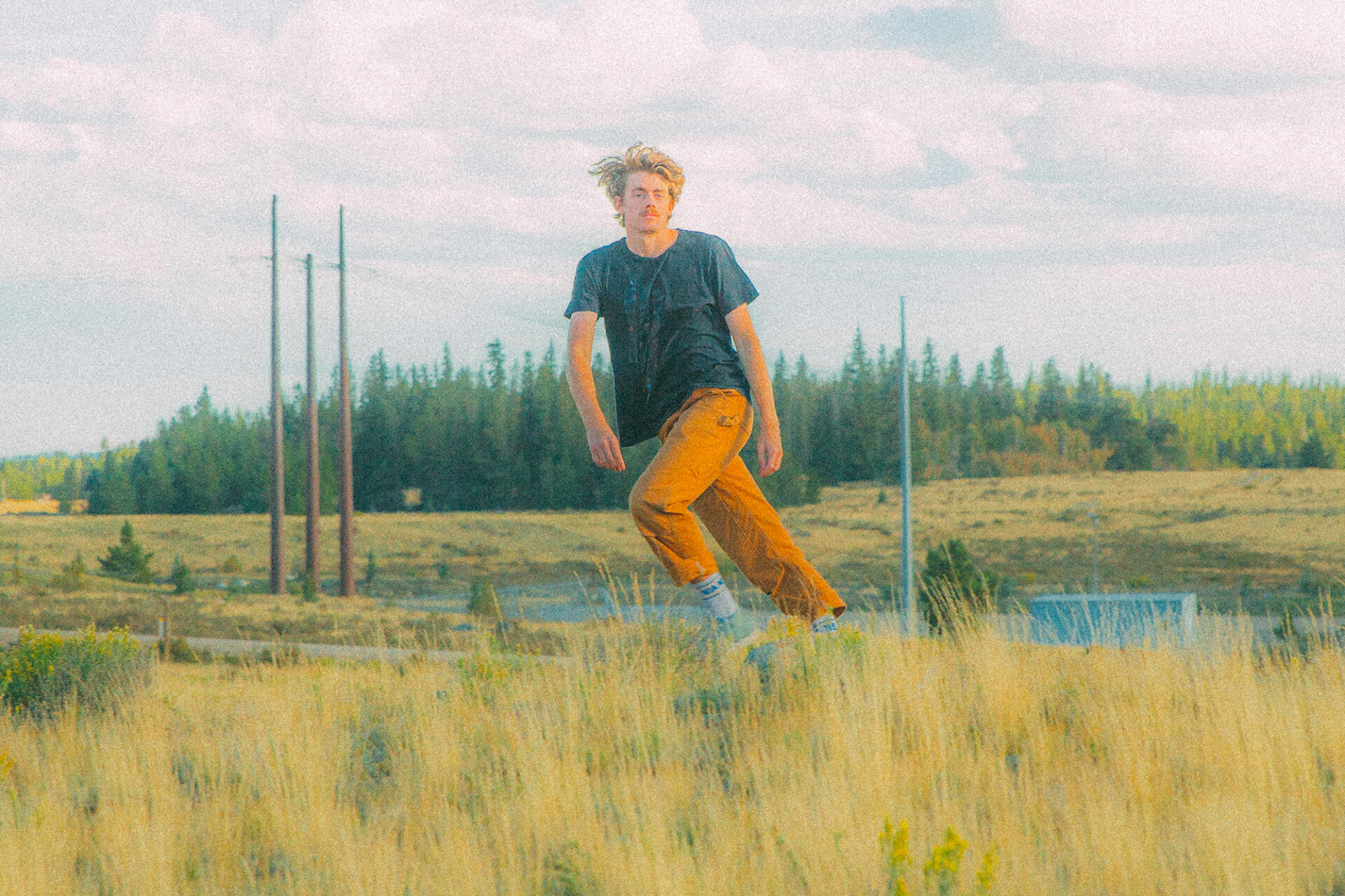
BOHDI
PLEASE, INTRODUCE YOURSELF.
My name is Bohdi and I've been making music for six years.
I’D LIKE TO SPEND A FEW WORDS ABOUT YOUR SONG “AMAZING PT. 1” AND THE RELATIVE VIDEO FROM YOUR EARLIER ALBUM. WE SAW YOU WERE GRADUATING THERE SO, I GUESS, MUSIC WAS JUST A HOBBY AND A PASSION BACK THEN WITH A MARGINAL PART IN YOUR LIFE. HOW THINGS EVOLVED IN YOUR LIFE MUSICALLY SPEAKING SINCE THEN, HOW MUCH OF YOUR EVERYDAY LIVING IS OCCUPIED BY MUSIC?
Yeah, so with Amazing Pt. 1 and that whole album, I had already knew that I wanted to do music for a career. But I was still in school and having to go to class and do fucking homework and everything, so I was fitting music in between that. Today, I'm still not doing music full-time because it doesn't quite pay the bills, so I'm working another job in the meantime. So I still make music whenever I have time and whenever I feel like it, but it feels like less pressure and I like working a lot more than I like going to school so I'm generally happier lol.
I LIVE IN ITALY AND I FIRST DISCOVERED YOU BECAUSE A RADIO PLAYED THAT SONG, BECAUSE IT WAS MADE IN COLLABORATION WITH AN ITALIAN BAND. DO YOU EVER CARE ABOUT YOUR INTERNATIONAL AUDIENCE AND YOUR FEEDBACK ABROAD? DO YOU EVER FEEL LIKE, THANKS TO THE INTERNET, IT’S ALL RELATIVE AND FLAT?
That's awesome, I didn't know that song was on Italian radio! But yeah, Cactus? being involved in that song was so so awesome. I randomly found that instrumental on Simone's soundcloud and then they were down to put it out together! So that was great, and then I've gained a bunch of Italian fans because of them and it's really opened Italy up as an opportunity for people to listen and become fans. I can't thank them enough for that. And of course, I love interacting with fans/musicians/etc. internationally, and I'd love to play a couple shows over there sometime.
ONE THING I LIKE ABOUT YOUR ALBUMS IS THE STRONG IMAGERY AROUND THEM, ALSO THANKS TO YOUR BROTHER’S WORK. WOULD YOU SAY YOUR MUSIC DEFINES THE IMAGERY OR IS IT MORE A MIX OF INFLUENCES THAT AFFECTS BOTH?
Thanks so much for saying that! Visual imagery is super important to me and obviously to my brother Kayhl, who does all my artwork and videos. But usually, I'll make all the music first (and Kayhl helps a lot with the music too), and then we'll talk about what we think it's gonna look like visually. Or he'll sometimes just take it and run with it and I'll give advice here and there. It's cool though to have someone accompanying me visually.
HAS YOUR WORKING AND CREATIVE PROCESS CHANGED FROM YOUR FIRST ALBUM?
My process has changed a little bit. First of all, I took a break after finishing the first album before I started writing the second one, to make sure they wouldn't just be two of the same album. But yeah, I tried to lay it all out before we got into the studio to record, as opposed to last time when I was making big changes up until the last second. It's made it a bit less stressful this time around.
YOU SAID YOU STARTED WRITING A YEAR AGO. YOU CAN GO THROUGH A LOT OF THINGS DURING THAT PERIOD, SO I WONDER HOW MANY TIMES YOU DELETED/CHANGED YOUR TEXTS. WERE YOU CONSTANTLY WRITING OR THINKING ABOUT YOUR NEW ALBUM OR HAD SOME OFF PERIODS TO CLEAR THE MIND?
Yeah, I wrote at really random times throughout the year. Sometimes I would go like a month without writing much, and there was one stretch where I wrote like three songs in a week. So it all kinda depends but I would mostly just write about whatever was happening to me in a specific moment, then I would try to string those moments together naturally.
I TOOK A BREAK AFTER FINISHING THE FIRST ALBUM BEFORE I STARTED WRITING THE SECOND ONE, TO MAKE SURE THEY WOULDN’T JUST BE TWO OF THE SAME ALBUM
THERE ARE MORE FEATURING THAN YOUR FIRST ALBUM, HOW DID YOU CHOOSE YOUR COLLABORATIONS, WHAT WHERE YOU LOOKING FOR?
I think technically there are more features on this album but it didn't feel so much like that. I did work with Kayhl a lot more closely musically this time around, and you can see he's featured on KissAss. But he did a lot of writing too, and that's actually him pretending to do a slow-motion voice in the background of "Just Nice Colors." Then Francesca Blanchard came on too, and I was really excited about that because she's been good friends with my brother and I've liked her stuff for a while. She has an insane voice and was really into what Kayhl and I were thinking for that song, so it worked out beautifully. And I wanted to bring my friends on toward the end of the album, same as last time, cause they're awesome.
CAN YOU TALK ABOUT THE RECORDING SESSION? IS THERE A PARTICULAR REASON WHY YOU CHOSE TO RECORD IN ALMA IN A CABIN INSTEAD OF A STUDIO?
We decided to record in Alma for a few reasons. First, we had been trying to get into a studio for cheap, but it was not possible. Studios are expensive, the school Zach and I went to l wasn't going to let us record for free (but we did try to make them haha), and none of us had that kind of money to spend on it. Luckily, Zach had all the equipment we needed, and my friend Avery and his dad had just purchased a cabin up in the mountains. I went to college in Denver, Colorado, a few hours away from Alma/Fairplay, and Zach still lives in Denver. So Avery let us use the cabin and Kayhl and I flew from New York/Vermont respectively to go record over there. It worked out great!
WE CAN ONLY SEE YOU DURING THE RECORDING SESSION. DO ALL YOUR FEATURES HAVE BEEN REGISTERED SEPARATELY? HAVE YOU BEEN WORKING WITH YOUR COLLABORATORS FROM A DISTANCE OR DO THEY LIVE NEAR YOU? I GUESS THIS GIVE YOU THE OPPORTUNITY TO WORK BASICALLY WITH ANYONE IN THE WORLD BUT AT THE SAME TIME DO YOU THINK IT MAKES IT HARDER TO SHARE OPINIONS AND IDEAS. HOW WAS IT?
There are only a few collaborations on the album, so I'll talk about each separately.
Kayhl, my brother who made the documentary, is featured on "KissAss." We wrote that song together and he sings it with me, so that all happened at the cabin.
Francesca Blanchard is an incredible singer and musician who is good friends with Kayhl, and she's featured on "Sike." When we were doing an earlier writing session in Vermont (which you don't see in the documentary), Francesca came along and we got the beginnings of her collaboration done. A few months later, they did the actual recording in Vermont, and I was in New York so I just had to give a few notes and trust their judgment. And it turned out beautifully, so I think it worked great.
My friends Aaron, Anna, Earl, and Liz are featured on "Groceries" and "Tomorrow, Yeah" doing fun, short singing pieces. They're all awesome and goofy and great at singing so I had them sort of figure out their own ideas and we went back and forth a little bit. Zach recorded Aaron, Earl, and Liz's parts in Colorado (because they all still live there) and I recorded Anna's part in New York. Then Zach put it all together!
FUTURE PROJECTS?
I'm not sure yet what's gonna happen in the future! I'm taking time off of writing so I don't make the same album twice, but hopefully I'm gonna play a couple shows sometime soon around New England. I'm excited to play the album live. After that, who knows! We'll see.
DENNY MAWELLA
PLEASE, INTRODUCE YOURSELF.
Mine is a typical suburbian raised kid background. I am talking about the south of Milan, between the Abbiategrasso green subway terminal and the Gratosoglio neighbourhood, where I spent most of my days as a teenager doing basically nothing, hanging out in parks and squares. Then I got into graffiti (for a little time) and, almost simultaneously, I got into photography. Hanging around for the most part of the days influenced my production which is highly street focused and, maybe with a more conscious approach, is still like this. When I say "street" I don't mean just my neighbourhood and the graffiti but everything that was happening and may attract our attention, both between us as friends both looking at the people around.
WHAT DO YOU LIKE ABOUT PHOTOGRAPHY? HOW DID YOU CHOOSE THIS TYPE OF MEDIUM
It's always a bit hard for me to explain what I like about photography and I often change my mind. As a kid I was already very curious about it. My neighbour was a photographer and we used to go to his home to play with his son. I remember that sometimes, opening the bathroom door, I could find this red light with rows and rows of films hanging to dry, rather than photos dipped in to the developing tub. Later he moved away. I got back to photography many years later, as I said before, during the graffiti period. I met other people, which are still close friends nowadays, that were getting into this photography thing and from there it all started. We used to have the same opinion about what we like to shoot, even the choice to only use black and white, that was an obsession [laughs]. Later, we switched from digital camera to film. We developed the films at home and at school, we used to sleep the lessons to do prints in the darkroom. It was kind of a nerd period if I think of it now [laughs]. This is what I like about photography, the fact that you don't have to study it at an academic level. It's all about instinct. You shoot what you like, as you like it and with the camera you are more comfortable with. I think that you need some technique, for sure, but it may take just one month of full immersion with tests and then you get it. Also experience counts but, honestly, the only study I would do beside taking photos is discovering about other people productions. It is fundamental for me and also interesting.
THIS IS WHAT I LIKE ABOUT PHOTOGRAPHY, THE THAT FACT YOU DON’T HAVE TO STUDY IT AT AN ACADEMIC LEVEL.
WHAT DOES IT MEAN FOR YOU BEING A PHOTOGRAPHER IN THE INSTAGRAM ERA?
My first approach to Instagram was pretty ignorant. I was using with no real interest. Now I publish completed works rather than on going projects. In the end it can be a good showcase which, used in a proper way, can give you some good visibility. It rocks. It's a type of media that can really fuel creativity . You can be like "Everyone is good at taking pictures on instagram" but on the long period you can clearly see who is doing it properly and who's not. Real recognises real, in the end (cit.) [laughs].
DO YOU ONLY WORK WITH FILM OR ALSO WITH DIGITAL? WHY?
I work a lot with film. In my opinion there's no contest. It gives a better grain to the photos and the feeling you get when looking at them is totally different. Personally, I also have another approach to what I do if I am using film. It's like I was able to imagine the shoot I have to take, the way I want it, and in the end it's almost always as I had it in my mind, especially in the light chromatic result. It makes images more alive and intimate.
HOW DO YOU RELATE WITH YOUR SUBJECTS DURING A SHOOTING? WHAT DO YOU TRY TO GET FROM THEM?
I've been lucky to shoot mostly my friends and people I know, until now. This allowed me to interact with them in a faster and confidential way. Usually I tend to observe a person and get some details I want to stand out. But that's a very personal situation. They're often physical details or behaviours, I don't know...some pose made for mistake, a grimace. These are feature that makes interesting what I am about to shoot. It's an intimate approach that I try to establish with my subject, that's why I was saying I was lucky to shoot, in a working environment, close people. I think it's important that who's on the other side is comfortable and, to make it possible, I try to keep a distance that allow me to give a proper look without being stifling.
IN THE PROJECT SMALL BRIGADE WE CAN NOTICE A DIFFERENT STYLE THAN YOURS USUAL. HOW DID YOU APPROACH THIS PROJECT?
With a lot of appetite [laughs]... It came up like this, for fun. Laura tests lots of recipes she invents and obviously, before eating them she takes like one hundred pictures. In that moment we thought it could be exciting to make a small zine/cookbook, with her recipes, my photos and the graphic layout made by my friend and roommate Nicolò. We wanted the final product to be perceived with a home made feeling and that everything that was cooked and shot was on a kitchen table of an apartment. It has been my first still life. Colored backgrounds, warm living room lights, crazy food colors and the same goes for the plates that Laura collects, they made everything more exciting for us. What we were doing was very instinctive. Gut feeling in every way. Also, the second issue is coming out soon.
WHAT WORK ARE YOU MOST PROUD OF?
I am happy with everything I have done so far. At the moment the Hoodwave Session zine is what I am the most proud of. It's a six hands work, shot by me and Any and directed by Dali. We are long time friends and having realised a product shot in our zone with our own photographic aesthetic, shooting our friends, was pretty unique.
WHO OR WHAT WOULD YOU LIKE TO PHOTOGRAPH ONE DAY?
Other people's life, maybe around the world.
FUTURE PROJECTS?
Eheh... I have an upcoming project in collaboration with Hugo, another photographer friend I am working with on a series about Boifava, a south Milan located street. The book is coming out soon, you can see some posters around in town. For 2019 I have another on going project about a Bangladeshis boy which I am very close to, I am following him here and I will follow him through his country. Anyway, that's something we will talk later.
LAURA SANTOSUOSSO
PLEASE, INTRODUCE YOURSELF.
My name is Laura, I live in Milan and I’m 30 years old. Last year, moved by my infinite love for food, I left my office job to begin my kitchen training and I haven’t stopped to be happy ever since (notwithstanding the scars). Right after working at Erba Brusca, I’ve been at nannie.com and now I just got back from an experience at Septime and Clamato, in Paris.
YOU DESCRIBE YOURSELF AS A PRO HERBIVORE, CAN YOU EXPLAIN THE REASONS BEHIND THIS CHOICE?
It’s kind of an ironic definition, due to the fact that I always eat vegetables, of any kind and in a herbivore animal worthy amount. People always joke on me because I’m constantly munching some fruits or veggies. I eat everything but, for taste and ethical reasons, veggies represent the biggest chunk of what’s in my plate.
WHAT’S SMALL BRIGADE? HOW DID IT COME UP AND WHAT’S ITS PURPOSE?
SB is a recipes fanzine which will soon become a series. Denny (the photographer who took the pictures) and I came up with it because we wanted to make a small cookbook with a contemporary feeling and that could be nice to read even for those who are not cookers friendly. We wanted it to be home made and not studio made, I mean low cost but curated and most importantly independent. Inside you’ll find some of my recipes, tested and eaten in the last few months. We distributed it to some small resellers who believed in the project and we are more than happy about this.
NOWADAYS PEOPLE ARE ALWAYS MORE OBSESSED, CAREFUL AND NEW TASTES HUNTING. HOW MUCH DO YOU THINK IT’S IMPORTANT A NOURISH EDUCATION?
I think it’s important to educate people to enjoy genuine food in a balanced and happy way, stimulating curiosity for every kind of food, its origins, its production process and the people behind it, without necessarily demonizing or idolizing some. I am myself obsessed by the research of new flavours but I think it is fundamental to first know and understand the food of our territory as it determined our taste and our DNA. Italy has a huge panorama of products but few Italians really knows about them. Maybe that's because we take it for granted.
WHAT ARE YOUR INFLUENCES IN YOUR ORIGINAL RECIPES? WHAT KIND OF SENSATIONS DO YOU TRY TO REACH IN THE FINAL OUTCOME?
I always start from one single raw seasonal matter, treating it with respect and trying to fully understand its features. I impose to myself to use every part of each ingredient, without wasting anything. The final result should be genuine, with clear flavors, nice to see and good to eat but also good to imagine before it comes to your plate. I never use cookbooks, I try to use my insight and catch old memories of good things I ate during the years. Denny himself is a good inspiration for me.
WHAT KIND OF FOODS DO YOU PREFER IN YOUR KITCHEN?
It all depends on the season! It’s been awhile now, that I am really into fermented stuff, self production and recovery cooking. I’ve never been a creature of habit and I constantly change what I eat. Anyway, I always have garlic, onions and fresh herbs in my kitchen, that’s for sure.
WHAT ABOUT DRINKS?
As for the drinks, at home or outdoor, I let Denny decide for me the most of the time, from the moment he knows more about wines & co.. Just like for food, I like to be curious towards small producers. At the moment, I'm really enjoying the R.I.P. (Rest In Pills) a craft beer by Carlo Eugenio Fioriani.
I ALWAYS START FROM ONE SINGLE RAW SEASONAL MATTER, TREATING IT WITH RESPECT AND TRYING TO FULLY UNDERSTAND ITS FEATURES.
WHERE AND HOW DO YOU TO GET THE RAW MATTERS? ANY ADVICE?
I am constantly looking for new ways to buy that gets me close to the producer. I almost buy everything at farmers market, in particular at Mercato Della Terra (two times a month at La Fabbrica del Vapore in Milan) or through short circuit selling networks, like Alveare. My advice is to overcome the laziness and avoid the supermarkets, in favour neighbourhood markets, small boutiques or , if possible, directly from producers.
SINCE WE'RE TALKING ABOUT FOOD, COULD YOU DESCRIBE YOUR TYPICAL FOOD DAY? WHAT DO YOU COOK/EAT? ARE THERE ANY DIFFERENCE IF YOU'RE ALONE OR WITH SOMEONE ELSE?
When I am not working, I cook for me and who I love anyway. The cooking job is pretty tiring but I hate random eating during my free days so I always try to save some time for me to buy and cook the stuff I like at home. Let's say I take advantage of that to try and test new ingredients and make them tasted by others. At the moment, I am very focused on fish and I mostly eat that. Anyway, even when I am alone it doesn't change that much, I spend the same time to preparation and cooking. P.S. I also love going at the restaurant, there's an enormous amount in Milan.
FUTURE PROJECTS?
I simply want to keep going on with my training, without losing poetry and passion for what I do.
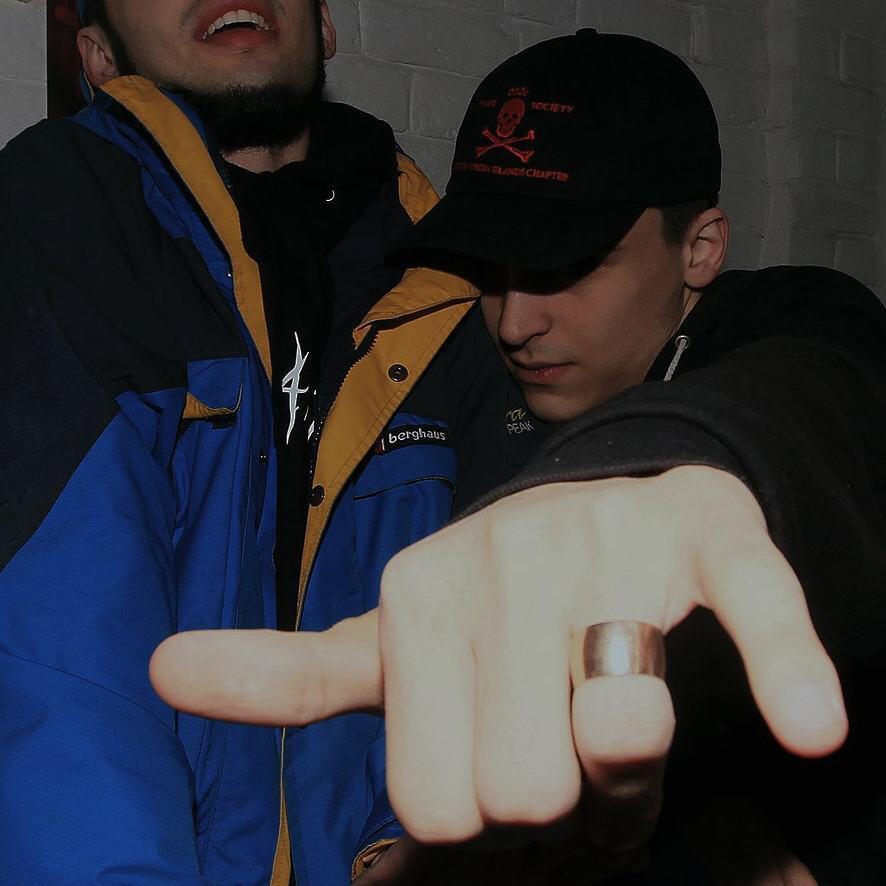
TIMA "ALLERME" ALLER
PLEASE, INTRODUCE YOURSELF.
I'm Tima Aller from the Russia's most exciting region — The Urals, that is situated at the foothills of the great Ural Mountains, from a really big city called Perm, that has an amazing underground life.
Mostly known as ALLERME, I started my way in 2011 administrating the biggest dark ambient community in Russia and chasing the mysteries of nature in Prikamye forests by making long and selfless field recording raids.
Now I host my own show on New New World Radio — the most promising online-radio project in Eastern Europe. It's called WOUNDED. In this show I'm exploring and reinterpreting the forgotten experimental heritage of the 20th century and the way it's reflected within the modern post-musical paradigm. Allowing the listener to touch the deep diamonds of the Russian avant-garde scene of the 90s and the early 2000s, nowadays we find the edges in contact with the quasi-deconstructivist club prism.
WHAT DOES UNDERGROUND MEANS TO YOU, EMOTIONALLY SPEAKING?
The only way to realize is to ignore all the shit around this term. The underground is just what will overwhelm you if you take a glimpse into the abyss. Other people. Other thoughts. Other sounds. The underground is a refuge.
IT'S BEEN 8 MONTHS SINCE YOU RELEASED "ESCAPE VELOCITY", HOW DO YOU FEEL IT'S BEEN RECEPTED?
This work was practically my first serious music experience. And it was also a reflection of the most frantic, frightening and swiftly passed time in my life. It obtained many likes in Russian social media and beyond, but despite this, such music no longer matches the scope of my interests. Now I’m aimed at more experimental forms of art, including voice art.
HOW LONG HAVE YOU BEEN WORKING ON IT?
We worked at these tracks for about six months.
HOW DID YOU CHOOSE THE PRODUCERS YOU'VE BEEN WORKING WITH?
The person with whom I made this album lives in my city. We did one party together before. Now I basically try to work with musicians who have similar views on art. Their music goes far beyond beatmaking.
THE TRACKS HAVE ALL DIFFERENT MOODS BUT WHAT KIND OF FEELINGG INSPIRED YOU THE MOST IN THE WRITING?
Mostly this is the sense of detachment, a feeling of dependence and humility in front of the vast world. I returned from the US, I did not live my own life for the whole year, and after I met the guys with whom we did the incredible thing in our city - we created a very popular bass party-project. It was a story of a great rise and a rapid fall. This album is a reflection of those times both inside and outside of me.
[NOW] I BASICALLY TRY TO WORK WITH MUSICIANS WHO HAVE SIMILAR VIEWS ON ART. THEIR MUSIC GOES FAR BEYOND BEATMAKING
FUTURE PROJECTS?
Now I'm working with really intriguing musicians. I’d better not say with whom exactly. Let it be a secret. They will probably be associated with the SYMBOLS label. I also actively communicate with highly talented producers from Italy - now I’m busy with some tremendous stuff with Petit Singe.
VANADIO23
PLEASE, INTRODUCE YOURSELF.
My name is Andrea and I am the founder of VANADIO23. Merging my greatest passions, art and fashion, I decided to make a line of unique piece hand painted jackets. Talking about my background I have a Art Degree, I have experience in brands retailing and as print designer for various studios. VANADIO23 is something personal, something mine.
HOW VANADIO23 CAME TO LIFE?
The VANADIO23 project was born as a vent: I've been wanting to make my paintings wearable since ever, even if I haven't studied as a fashion designer. It was my painting skill that brought me to the fashion world.
WHY THIS NAME?
The collection is composed of 10 outerwear jackets inspired by the classic worker suit, the blue one with chest pocket usually wore by mechanics. To underline this inspiration I named the brand VANADIO23, which is nothing but the material used to make screwdrivers and wrenches. It's a material that you can find in nature: it looks like a pink rock and is represented on the periodic table with the same color and the symbol V23.
DO YOU HAVE A TEAM OR ANY COLLABORATORS?
The brand is relatively young, I want to do something special out of it and I really hope to make it. I have a lot of friends that help me in various ways but no, I have no collaborators at the moment. I do everything by myself.
WHAT KIND OF FABRICS/MATERIALS DO YOU LIKE TO WORK WITH?
The support I use to paint is a high quality italian lamb patch. I chose this kind of leather because of its compact grain, it's extremely light, soft and fine. Painting on this surface is a unique sensation, the brush bristles flow on it like on nothing else. Because of this material preciousness, the jacket couldn't be any lower: the canvas is a magnificent blue navy massaua and buttons are made in real horn. I tried to create a luxury product but young and cool at the same time.
WHY DID YOU CHOOSE TO WORK ON UNIQUE PIECES INSTEAD OF SERIES?
VANADIO23 is an experiment, a place where fashion meets visual arts. I created it to make something unique, whose value can be perceived by who wears it and cannot be unseen. They are all unique pieces, numbered and cataloged, where craftsmanship shines through every detail: on the surface you can feel the brush touch and see finger taps and pen traces to construct the drawing. I think I wouldn't get the same feeling reducing all this to a print.
WOULD YOU LIKE TO SHARE THE CREATIVE PROCESS FOR THIS FIRST COLLECTION?
I did various attempts before this final collection: I started by making an entire ready to wear no gender collection with workwear inspired garments sided by vintage pieces decorated with simpler patches. Then I focused on a single product so that I could make it perfect. The jacket on which the collection VANADIO23 revolves around maintain the worker spirit from where my research started and the patches that enrich it are bigger and cover the whole back.
HOW DO YOU CHOOSE THE SUBJECTS AND THE GARMENTS TO APPLY THEM ON? IS THERE A RELATION BETWEEN THE TWO?
I wanted the jacket to be very simple and super practical, with lots of pockets and oversized so that it could hold a big painted patch, almost like it was a frame. I never worry about what will be applied on a jacket: I paint what I like totally free, choosing what attracts me the most. The subjects of my paintings are usually naked bodies and I am fascinated by the juxtaposition of human subjects and animal and floral elements. The result is an anthropological bestiary with echoes from the extremely sensual italian painting tradition.
I FOCUSED ON A SINGLE PRODUCT SO THAT I COULD MAKE IT PERFECT
WOULD COLLABORATE WITH ANOTHER BRAND IF YOU WERE GIVEN THE POSSIBILITY OR YOU THINK THAT VANADIO23 WOULD LOOSE ITS SENSE? IF YES WHAT GARMENT WOULD CUSTOMISE?
I am already collaborating with a brand named GUNTAS, very young but more structured than mine and with a great potential. I made some jackets, pants and accessories for them.
FUTURE PROJECTS?
I don't want to make only jackets: I'd like to make an entire collection of outerwear, accessories and design pieces. I mean a big cauldron where I can give vent to my creativity and, why not, even that of other artists. I wish VANADIO23 was forge of talents; for example, I look for a future where incredible ceramists create jewels and accessories and wicker artisans interweave leather bands for bags and belts. It would be great!
SOLOMOSTRY
PLEASE, INTRODUCE YOURSELF.
Born in 1988. Graduated in graphic design and art direction. Screen printer and multidisciplinary artist based in Milan.
WOULD YOU LIKE TO SHARE THE ARTISTIC PATH THAT BROUGHT YOU TO CONCEIVE THE "MONSTERS", YOUR SIGNATURE WORK AT THE MOMENT?
The monsters come to life by night, accompanied by techno sounds they take possession of the people who wants to stay awake forever. The monsters are generated by those emotions that you can't control, that transform you giving vent to your real inner side. The monsters are the identity that stay hidden by day but gets revealed by night.
THE MONSTERS OFTEN EMANATE AGGRESSIVITY, IS IT A FEELING THAT IS PRESENT OR THAT YOU THINK OF WHILE CREATING?
The monster are aggressive because they always want to conquer more space. They don't wait to be look at but take your attention.
WHAT DO YOU TRY TO AROUSE IN THE SPECTATOR? AWE, FEAR, ATTRACTION...
It all depends on who is watching, some people are scared and some are fascinated. It's up to your inner monster to decide if being part of it or fear it.
YOUR ARTWORKS SEEMS ABSTRACT AND FIGURATIVE AT THE SAME TIME. HOW MUCH OF IT IS CALCULATED AND HOW MUCH IS IMPROVISED? DO YOU THINK SPONTANEITY IS IMPORTANT?
I don't think you can achieve pure results with calculated decisions. The only think I decide is the stroke that will generate the monsters but, in the end, its all about them appearing to me.
YOU HAD A SOLO SHOW IN BERLIN RECENTLY. HOW WAS IT?
C41 Magazine gave my monsters the opportunity to get free on different media, it might have been the most complete show I did so far. Berlin is one of those cities where my monsters are more free to express themselves, since night often take part to the day without stopping.
I DON’T THINK YOU CAN ACHIEVE PURE RESULTS WITH CALCULATED DECISIONS
DID YOU MANAGE TO FIND THE TIME TO LEAVE YOUR MARK?
Yes, a little bit but Berlin is too big to leave your mark in a couple of days.
IT WAS NOT YOUR FIRST TIME ABROAD, ARE YOU NOTICING A DIFFERENT FEEDBACK THAN THE ONE YOU GET IN ITALY?
My monsters are stronger in Italy because it's their home and they are helped by our allies. Thanks to "The Don Gallery" I exhibited at the first Urvanity Art in Madrid and feedbacks were very positive. Spain is a country where I spent a lot of time, it always seemed very open minded and cozy. People have no taboo and love the night, that's why I think that my monsters are always welcomed there.
WALL OR CANVAS? WHY?
I always preferred the walls because they reach a larger public, everyone can see them. I like to free my monsters in abandonment and degradation places but a the same time, with canvases, I can bring the crude imagery I always used in candid situations and see what happens.
YOU LIKE TO EXPRESS YOUR ART THROUGH DIFFERENT MEDIA, FROM PAINTING TO CLOTHES AND ALSO TATTOOS. DO YOU THINK IT'S REDUCTIVE TO APPLY YOUR WORK TO JUST A SINGLE WAY OF COMMUNICATION OR YOU DO IT FOR THE VERSATILITY?
I don't think there is just a single elitist medium in what I do. The versatility of my work is given by the aim to never stop.
FUTURE PROJECTS?
Taking always more space.
SNEM
PLEASE, INTRODUCE YOURSELF.
I grew up in a provincial environment, where there were very few motivations and basically I was spending most of the time drawing and painting. In 2003 I started doing graffiti and kept doing it for the whole high school period, for a while I've also been working as an assistant in a sculptor studio. I was attracted by unusual things, by what is bizarre and grotesque, I was really enjoying cinema and I used to study directors like Švankmajer, Lynch, Cronenberg and Korine, fascinated by movies like Elephant Man, Otesánek or Naked Lunch. Which, later, inspired my imaginary.
HOW DID YOU GET IN TOUCH WITH ART?
I think my interest in art started during high school. During those years I was attending an older girl enrolled at the academy of fine arts and I used to skip school, spending the mornings sneaking into classrooms to follow the lessons.
SO YOU STARTED WITH GRAFFITI AND TAGS, WHAT MADE YOU CHANGE DIRECTION AND USE MEDIUMS SO DIFFERENT FROM THE SPRAY CAN?
During university, my attention moved elsewhere, many things changed, like loves and friendships and I stopped painting for more than one year. Anyway, around 2011, I saw Exit through the gift shop, that gave me the input to start again. I got over graffiti, which wasn't stimulating me anymore, so I abandoned spray cans to experiment other techniques, like posters, suddendly realising that streets was exciting but also a proper stage.
WHAT ARE PROS AND CONS ABOUT USING THE PUBLIC ENVIRONMENT TO EXHIBIT YOUR WORK?
An interesting aspect about working on the street is the precariousness of the interventions, in my opinion is a daily reminder, it reminds me the importance of not sticking to things, just like tibetan mandalas that, once completed, get destroyed, to underline the non permanence of human things. Working on the streets allows you to get more visibility, especially when you act illegally, because it's like promoting yourself without paying municipal tax. Anyway, you also have to deal with a space that is used by everyone and independently by your purpose, every act has a political implication.
HOW MUCH PLANNING IS BEHIND YOUR INTERVENTIONS? I CAN IMAGINE, BASED ON YOUR TECHNIQUE, THAT YOUR WORK NOW IS LESS IMPULSIVE THAN THE SPRAY CAN ONES.
I usually work on a project, making a series of artworks with the same concept, to then move on a new project and so on. First, I try to read as much as I can, studying themes that I am interested in, I make sketches, I look for spots, I prepare everything and in the end I go down into the street, at least for what concerns sticking.
ARE YOUR PUBLIC INTERVENTIONS ALL ILLEGALS OR THERE IS SOMETHING AGREED WITH PUBLIC AUTHORITIES? IS THERE A DIFFERENT CREATIVE APPROACH?
It did happen to work with some municipality or private citizen and, obviously, things change, the process is somehow altered because you have to deal with other people, tastes, rules, requests, revisions and censorship.
SINCE YOU DON'T TEND TO TIE TO MUCH TO YOUR ARTWORKS, DO YOU THINK THIS MAY HELP YOU PUSHING BOUNDARIES OF CREATIVE PROCESS AND MOVE ON NEW IDEAS AND SUBJECTS?
Absolutely yes, it's a condition that forces me to not bound myself to what I do or give to much importance to ideas. In the last years, especially, my imaginary changed a lot both in contents and aesthetics. Also, the fact that most of my artworks does't exist anymore made me realise how much this logic is necessary for changing.
I DON’T AIM TO A SPECIFIC TARGET. PEOPLE ARE RECEPTORS IN A SHARED NETWORK AND, FROM THE MOMENT I CREATE AN ARTWORK, I AM MEETING AN URGENCY THAT REFLECT THE NEEDS OF A GROUP, SO I AM MYSELF PART OF THAT TARGET.
THE POSSIBLE AUDIENCE THAT MIGHT GET IN TOUCH WITH YOUR WORK, DOWN THE STREET, IS ENORMOUS AND HETEROGENEOUS. DO YOU THINK AT A CERTAIN TARGET WHEN MAKING AN ARTWORK? WHAT TYPE OF REACTION YOU AIM TO PROVOKE?
I think it's funny to observe passers by reactions but I don't usually have many expectations about this, I don't aim to a specific target. People are receptors in a shared network and, from the moment I create an artwork, I am meeting an urgency that reflect the needs of a group, so I am myself part of that target.
DO YOU SEE, IN YOUR TRIDIMENSIONAL SCULPTURAL WORKS, JUST AN AESTHETIC EVOLUTION OR NEW CONTENTS ASWEL? WOULD YOU LIKE TO TALK ABOUT THE CHANGING?
In the last years, I moved away from figurative disregarding realism research, giving space to casualty and spontaneous gestures, forming amorphous figures that brought to get rid of volume illusion. After some years I started using 3D software again, that basically define 3d forms in a simulated space, but what made me use this softwares again is the appeareance of calculation errors in this applications. In other words, I was fascinated by the weakness of a perfect interface. In July 2017 I participated to an artistic residency in Cosenza, where I had the opportunity to develop this research which realised as Informe, a project that appears as amorphous structures installed in a public context and moved into a virtual space thanks to 3D scanning, trying to create a connection between reality and simulation. During the process, unexpected and out of control results get generated and this made me get close to the concept of Art Brut and, recently, take back again the spray can to make graffitis, realising that probably aesthetic and contents are inseparable.
FUTURE PROJECTS?
By the end of the year I will release a self production in collaboration with Federico Casella and in 2019 I am organising for a personal show, probably in Turin.
RENE WAGNER
PLEASE, INTRODUCE YOURSELF.
Hello, I'm Rene Wagner Sports. In the broadest sense, a sculptor.
CAN YOU REMIND HOW AND WHEN YOU BECAME INTERESTED IN SCULPTURES AND GRAPHICS?
In my old job as a car painter I saw many damaged cars. The owners wanted them to be fixed but i thought they were ready and really aesthetic. That's now 16 years ago.
CARS ARE A RECURRING ELEMENT IN YOUR WORK. CAN YOU TALK ABOUT IT? WHAT’S UP WITH THIS FASCINATION?
I like the idea to customise the own vehicle individually. Just as the boys from the village screwed in their barns and proudly present the result at bus stops. I work in the atelier and present my works with a similar intention in galleries.
JUST AS THE BOYS FROM THE VILLAGE SCREWED IN THEIR BARNS AND PROUDLY PRESENT THE RESULT AT BUS STOPS. I WORK IN THE ATELIER AND PRESENT MY WORKS WITH A SIMILAR INTENTION IN GALLERIES
CAN YOU DESCRIBE YOUR OWN CAR IF YOU HAVE ONE? DO YOU CUSTOMISE IT AND TREAT IT AS SCULPTURE AS WELL?
My car is a boring station wagon. it's not a sculpture, otherwise (i think) i would have become an autotuner.
YOU ALSO SEEM TO BE VERY “LOGO ADDICTED”, WHAT DO YOU THINK IS THE STRENGTH OF LOGOS AND THEIR ROLE IN YOUR WORK?
I grow up with Michael Schumacher. from that time on i knew Malboro. Advertising had a a great value in my television youth. Through graffitti I learned even more how important it is to spray your own name as a brand.
CAN YOU TELL ME MORE ABOUT YOUR GRAFFITI PERIOD. WHAT WAS YOUR NAME AND WHAT WAS YOUR STYLE OF CHOICE?
In 20 years of graffiti you will experience a lot and do not talk about it. We should keep it that way.
HAVE YOU EVER DONE COMMERCIAL WORKS? IF YES, DOES YOUR CREATIVE APPROACH CHANGE?
Yes, no.
ONE OF THE THE THINGS I FIND INTERESTING ABOUT YOUR WORK IS THE MIX BETWEEN TRADITIONAL MATERIALS, LIKE CERAMICS, AND CONTEMPORARY GRAPHICS AND COLOURS. IS IT A CONTRAST YOU CONSCIOUSLY WANT TO EXPRESS AND COMMUNICATE?
Yes, that's my youth (forever young).
I CAN SEE THAT MOST OF YOUR INSPIRATION COMES FROM YOUTH MEMORIES. WHAT WAS YOUR CHILDHOOD LIKE? HAVE YOU ALWAYS BEEN CREATIVE AND WANTED TO BE AN ARTIST?
In my childhood I was a lot outside or alone in front of the tv. I broke many things outside in a creative way, as I would say. as soon as I knew the word artist (very late!) I wanted to be one.
FUTURE PROJECTS?
My own pretty bus stop in a nice gallery. Chilling with friends and family.
SUCUK UND BRATWURST
PLEASE, INTRODUCE YOURSELF.
We are Alessandro, David, Denis and Lukas. We are good friends since childhood that now work together.
HOW AND WHEN DID YOU FOUND THE STUDIO? WHAT WAS THE MAIN CONCEPT OR FOCUS BEHIND IT?
We first started by putting some of our early personal projects on tumblr and then decided to found an agency back in 2014 after we received more and more job requests. We really try to only work on projects we back up ourselves and which are fun to work on. We mostly work in fields like 3D, Graphic Design, Art-Direction and Merchandise.
WHAT ARE YOUR ROLES IN THE STUDIO?
Nobody has a certain role in our agency. Everyone of us is working to get the job done no matter the subject. We always help each other out if someone got stuck with a project. We also discuss every step we take during the creative process so we make sure everyone of us is happy with the outcome.
DESCRIBE SUB IN ONE WORD.
Family.
YOU RUN SUB AS A CREATIVE STUDIO AND A BRAND AT THE SAME TIME, HOW THIS THING EVOLVED?
We don’t really see ourselves as a brand. We are just a creative studio selling our own merchandise.
YOU ARE BASED IN MAINZ, NOT THE TYPICAL GERMAN CITY THAT FOREIGN PEOPLE LINK TO CREATIVITY. HOW IS IT LIKE WORKING THERE? WHAT'S THE CREATIVE SCENE LIKE AND WHAT FEELINGS AND INFLUENCES DO YOU PERCEIVE COMING FROM YOUR CITY?
The City itself isn´t quite a source of our inspiration. When we first started making design and digital art our inspiration came mostly through other artists we admired and knew through the internet. As we started to grow as a graphic studio we came in contact with lots of very talented people and made new friends with them - starting new projects with them and getting all kinds of new creative input. Being based in a small town is not a disadvantage at all. It helps you to focus on the things you really want to do and not being distracted. For us it's really important to exchange knowledge and ideas with friends and other artists to evolve and create new things. The internet makes it easy to stay in contact with the people we got to know on our way, and to get in contact with people whose work we like and want to get in touch with. It´s always a bit sad that most of the people think that creativity is something that goes hand in hand with urban life and larger cities only. Creativity can rise everywhere no matter the location. [As mentioned before] in Mainz there is little distraction from work and the things you really want to do, which is why we like staying here. Thanks to the internet it really becomes more and more unimportant where you are located. You can easily Skype and have a chat with Travis Scott, you don’t have to visit him in person.
IN SO LITTLE TIME YOU HAVE ALREADY WORKED WITH MANY IMPORTANT BRANDS AND CLIENTS. HOW WOULD YOU EXPLAIN YOUR SUCCESS?
It may be sound like a standard answer but our success just came as we went on with our work - step by step from personal work to paid projects. We always try to make something unique that hasn´t been there yet while always staying true to ourselves and the things we like about design.
CREATIVITY CAN RISE EVERYWHERE NO MATTER THE LOCATION
YOU DO A LOT OF WORKSHOPS AND TALKS, WHAT'S THE PART OF IT THAT YOU LIKE THE MOST AND WHY DO YOU THINK IT'S IMPORTANT?
The talks maybe are a kind of advertising on the one hand, but we also think that through talks we are able to help especially young artists who want to set up a studio or business themselves. When we started our business we were still studying and didn't really have that much experience in the working world and had to figure out lots of things on our own. So we hope the experiences we made may be helpful fore someone, so that they won´t have to make the mistakes we made.
IF THERE WERE NO MORE SUCUK AND BRATWURST IN THE WORLD, WHAT WOULD YOU EAT?
No comment.
FUTURE PROJECTS?
There is more to come! Stay tuned and follow us on Instagram.
IGOR PONTI
PLEASE, INTRODUCE YOURSELF.
Artistically speaking, I come from a typical applied arts swiss mind set. I studied graphic, composition, model making, drawing and photography. During the photography studies in Milan, I developed an interest for a certain photographic area, very similar to renaissance painting and landscape in particular. Later, the influences of the Dusseldorf School and American tradition arouse in me a strong attraction and made me elaborate on.
WHAT MADE YOU CHOOSE PHOTOGRAPHY AS YOUR EXPRESSION MEDIA?
It ain't clear to me yet how I got into photography. My first desire was to study painting at the academy, I've always been fascinated by flemish renaissance painters and I used to imagine myself as a painter.
WHY DID YOU CHOOSE TO USE A VIEW CAMERA? NOW THAT DIGITAL PHOTOGRAPHY ALLOWS TO INSTANTLY PRODUCE AN IMAGE AND IMMEDIATELY JUDGE THE RESULTS, WHAT BENEFITS YOU GET FROM SUCH A SLOW AND COMPLEX WORKFLOW?
Digital vs film is an endless debate that usually drives to nowhere. As for me, I work with the best tools that I can have for what I have to do. Everything I use is functional for what I want to create, it reflects the way I work, both temperamentally and physically. I've never been that type of photographer who always brings a camera with him, I don't shoot compulsively and I don’t feel the need to document everything I see. Rapidity is not something I need.
SO YOU DON'T LIVE YOUR PHOTOGRAPHIC ACTIVITY IN A DÉFORMATION PROFESSIONNELLE WAY? HAVE YOU EVER FELT THE NEED TO TAKE A PHOTO BUT YOU DIDN'T HAVE YOUR CAMERA WITH YOU?
It happened that I was attracted by something I saw I and couldn't take a photo of it but I've never lived this kind of situation with a sense of frustration. Conversely, I think it's more interesting and useful to mentally record an image without taking a picture, I'm sure it will enrich my imagination, creativity and understanding of what fascinates me.
HOW DO YOU DEVELOPE YOUR PROJECTS? DO THEY SIMPLY COME FROM A PERSONAL ANALYSIS OR THEY ALWAYS HAVE THE GOAL TO BRING A MESSAGE?
They mostly originate from an intuition that arouse in my head, a creative voice that I alway try cultivate. The intuitions are our background's childs in a larger sense, they come up from our reads, the people we hang out with, the environment around us, the studies, the education. As for the messages that artworks may enclose, I'm sure that they're already internalised by the people who stop to see. An artwork is the expression of whom created it and live by the reflection of observers. I also think that it lets emerge our inner feelings in a different way everytime.
I THINK IT’S MORE INTERESTING AND USEFUL TO MENTALLY RECORD AN IMAGE WITHOUT TAKING A PICTURE, I’M SURE IT WILL ENRICH MY IMAGINATION, CREATIVITY AND UNDERSTANDING OF WHAT FASCINATES ME
THE PHOTOGRAPHY, USED AS A DOCUMENT, BECOMES A DISCLOSURE ELEMENT. HOW MUCH DO YOU THINK IT'S IMPORTANT TO "EDUCATE" (OR INFORM) THE AUDIENCE AND MAKE THEM PONDER ON A CERTAIN ARGUMENT?
This may be another endless debate. I think It all depends on the words used to define the photographic process. "Photography" is a complex series of definitions bound to many factors, just think about the workflow occurring from pre-shoot to its diffusion. I think that if you want to "educate", you have to spend a lot of time understanding the image and all the phases it went through. After that everyone will have the tools to "read" and understand what's in front of him. The audience have to learn by itself, in order to be able to debate [on something].
LET'S TALK ABOUT TERRITORY, THE LEADING ELEMENT IN YOUR SHOTS. WHAT DOES THIS WORD MEAN AND REPRESENT TO YOU?
It is something I tend to deal with lately, when I am planning a new project. I have a romantic definition to use as an answer whenever I am looking for new subjects: the addition of the geological evolution and the history of the man represent the territory as a result. This means it is changing and it is historically linked to these two factors. What I do with my work is to define how and when one influences the other one the most. My pictures are my personal conceited idea of an equation that can generate infinite variables.
DO YOU FIND ANY DIFFERENCE WHEN WORKING IN A TERRITORY THAT IS FAR FROM THE ONE YOU COME FROM?
Personally, the only difference I encountered, which is also the most difficult to solve, is the time. I mean the time that it takes to be physically in a new territory and understand its dynamics, at least the fundamental ones to start developing a new project with consistency. I feel very close to anthropology and participating observation and I need time for that. Working in my territory, I have the benefit to be physically here, so the analysis process is also done by osmosis effect. I am planning to do works abroad, where there are situations that fascinate me and part of this is represented by the organization of the time. On the other side, the initial researches I do for any new project can be done everywhere.
HOW DO YOU RELATE WITH YOUR SUBJECTS (PEOPLE OR LANDSCAPE)? HOW DO YOU SELECT THEM AND WHAT DO YOU LOOK FOR?
First, I do something very trivial: I write down a checklist of everything that comes to my mind when thinking to the concept on a large scale. Everything that can be helpful as a reflection tip. From here I start my real research, reading and looking for similar works but also people consulting. Some kind of database to be more selective. The images I will make will be the product of this long process. Sometimes they will be exactly what I've been looking for, sometimes they will be random pictures but still a consequence of my research.
FUTURE PROJECTS?
In the last few years, I've been working on a new project called SOUTH OF NO NORTH, a research on the relationship between the geographical position of a territory and the representation of itself, that is if a land may have geolocalized features. I try to find a balance on cliches that identify south and north, looking for them in a specific area. Also, I look for external influences for matters that as been imported and a assimilated. It all looks very complex and since photography is for me a way to organize things, I am going through a very deep process.
As Hegel said: what we are “familiar-with” is not intelligently known, just for the reason that it is “familiar.” That's why I am in a very difficult visual synthesis but my projects come up from chaos and creativity and something is already taking form.
STUDIO CROMIE
PLEASE, INTRODUCE YOURSELF.
I took a coffee before getting on this train. It's the only drug I ever tried and it gives me a cocaine effect so I will answer the questions with arrogance and presumption, how beautiful. I learned to live by being actively part of the 90s punk scene. It was the only place where I could build the life I wanted (and the only one I would have lived) without anyone stressing me out. I already perceived the risk to die in the institutional bureau like 90% of my generation did. The rest of the things I could tell you infant, eduycation, curriculum and whatever, is only relevant for idiots.
HOW DID YOU COME UP WITH STUDIOCROMIE? WOULD YOU LIKE TO TELL THE STORY AND THE MOTIVATIONS BEHIND IT?
It came up as my personal natural extension, part of the absolute need to always just do what I wanted. I'd never accepted any form of subordination to anyone, with STUDIOCROMIE I simply granted myself the right to produce (communicate?) with rage and freedom and make enough money to never think about money.
HOW DID YOU GET IN TOUCH WITH SCREEN PRINTING? WHAT DO YOU LIKE THE MOST ABOUT THIS TECNIQUE?
I had the suspect that it could be versatile and that, once I got out it works, I would have used it in its full potential, ignoring the limits that it would imposed to me time to time. I am still printing nowadays because it surprised me how it is more versatile than I thought and if I think about it that is the only think I stll like about silkscreen: I can do it the way I want to, changing everything time to time. I bended it over and over based on what I needed, getting rid of all the technicality of professionals handbook slaves. In this times where even morons are given the chance to be creative, practice intended as last declination of "fucking around" and "trend", silkscreening gets often used by mediocre people. There's plenty of pretty boys interested in being connected to the medium and say "I am a silkscreen printer, you know.", instead of using it for real. It degrades me, that's for sure, like when you see a girl you like hanging out with a moron but you know she will never have as much fun with him than she would have with you. Poor screen printing.
YOUR EARLIER PROJECT, THE "FAME FESTIVAL" [HANGER FESTIVAL], WAS WELCOME WITH SOME SKEPTICISM BY LOCALS. WHAT FEEDBACK YOU GOT FOR "STUDIOCROMIE", INSTEAD? HOW MUCH ROOM IS GIVEN FOR CREATIVITY IN GROTTAGLIE?
To be honest, Studiocromie was born earlier than Fame, which is instead a product of Studiocromie. Locals didn't know anything about it and, just like back then, today my interlocutor is not the Grottaglie guy. After the initial skepticism, the Grottaglie guy wrongly thought that Fame was a benevolent project, connected to the beauty. I tried to deny this in every way, even by painting enormous dicks in the historical downtown, but I didn't make it. People couldn't believe I was just minding my on dicks (literally) with my town and I had no fear to admit it. Fame was like a megaphone to say whatever came to my (and my friend's) mind. The positive impact (earning?) was just an accidental consequence.
If I could have express myself so noisy with another medium, less beautiful than public art, I would have willingly do it. I always say that if ping pong had the same communicative power of this fucking drawings on the walls I would have put on a ping pong challenge. But no.
So because of this miscommunication with locals I had to leave the public dimension of Fame to retire in the privacy of Studiocromie. As of today there are still many misunderstanding possibilities and maybe outside some frivolous event at the gallery for the exhibitions (that last one evening, I want to say that), the meeting spot has finally come to an end. I say finally because the Grottaglie guy, just like the Apulians, deserves nothing, never, me included. We are individual people and we only work as singular, no one ever gave us something and that's how two Apulians together are two clowns ready to fuck up each other.
Just think that in 12 years of selling paintings all over the world, I sold one in Apulia, last week... But let's go back to Grottaglie.
The room for creativity in Grottaglie is equal to the total absence of istitutions, unable to create in first person (fortunately) and manage what thirds like me do (fortunately).
HOW DO YOU SELECT THE ARTISTS YOU WORK WITH? DO YOU HAVE ANY LANDMARKS FOR WHAT CONCERNS AESTHETIC AND THEMES BEYOND BEING ABLE TO SCREENPRINT THE ARTWORKS?
Some are selected with my heart, some with my eyes. I try not to forget to select them thinking about money e when I want I let myself to be seduced by the trends, for example now the abstract goes hard while 5 years ago everybody was drawing puppets. Sometimes it's nice to work with artists that already have a following, with the rising ones I risk to waist my time talking with collectors. We don't want to teach them anything, right?
THE RELATIONSHIP WITH ARTISTS IS VERY CLOSE, ESPECIALLY WITH THE FOREIGN ONES, WHO ARE DIRECTLY INVITED IN GROTTAGLIE. SHALL WE DEFINE IT AN ARTIST RESIDENCY?
No. We're not talking of an equal collaboration. I am an ignorant but I feel like artists doing residencies always get a lot of freedom and acts in a parasite way, that only those art industry morons can permit. When I deal with people I always say that if I would have wanted to make art or culture I would have do it myself and I'd be the first parasite. We work here, we have fun, we go around, we eat and we live but nobody comes to have his own show at my home, I don't think twice to send them back home.
I always say that if ping pong had the same communicative power of this fucking drawings on the walls I would have put on a ping pong challenge
LET'S TALK ABOUT SANGUE (blood), YOUR CLOTHING BRAND. HOW DID IT COME UP AND WHAT INSPIRES YOUR GRAPHICS?
Sangue is my own crush to test myself in an unknown environment. It worked pretty well and I immediately lose interest in it, I only liked the bet, all about screen printing. It's been a year now that I quit making collections with a regular market deadline without having to humiliate myself talking to some garments dealer. Luckily, at this point, neither I nor you or our readers want to listen talking about fashion world morons. Anyway Sangue keeps going. I bought a new place where I will have my physical store and I'll be able to sell illegally too, just like everybody else does in Italy. Assholes!
FUTURE PROJECTS?
Imminent more than future, I am already active. I am about to shoot my second documentary and I am restructuring the place I talked about earlier to make a gallery, cinema, studio, home, guest house, store, garden, pool. An enormous productive potential and the big risk of not being able to get out anymore if not for travelling. Thank you!
COSMA FRASCINA
PLEASE, INTRODUCE YOURSELF.
My name is Cosma, I am an artist from a small town of the Salento province, the place where I was born and raised. Rather, it is the place where I got back after having some work experience elsewhere and where I found a proper environment to make my artworks. Both behind and above my shoulders there are the marks and teachings of many years at the mercy of what was boiling inside of me and that I wasn't able to bring to the surface, to make It visible or physical. I believe it's Art, getting rid of what is pulsing inside of you and give it some kind of form. I couldn't do it, and I must admit that I still have my difficulties, but I feel like it's worth it.
HOW DO YOU GET IN TOUCH WITH THE DESIGN WORLD?
I chose to become a designer during the third year of middle school, because I was spending a lot of time drawing cars and motorcycles. Years later I attended the ISIA school in Florence, where I graduated in Design. Right after that there was the crisis and just like every other crisis you learn a lesson. I understood what I wanted to do as a grown man.
ARE YOUR OBJECTS ENTIRELY MADE BY YOU? DO YOU HAVE ASSISTANTS?
Yes, they are completely made by me. At the moment I take care of every aspect of my work but I always have some friends around helping me with the heavy parts.
WHY DID YOU CHOOSE THE ARTISAN WAY INSTEAD OF INDUSTRIAL PROCESSES? WHAT ARE PROS AND CONS?
Because, when I set out, I had almost nothing but a space to work in. So I tried to apply apply and bear in mind the "Less is more" concept by Mies Van Der Rohe. At the moment, looking at the future, I do not exclude the possibility to experiment in a different way.
THE MATERIALS YOU WORK WITH ARE VERY SPECIAL, HOW DO YOU SELECT THEM AND WHAT'S THEIR LINK TO THE TERRITORY?
I was looking for materials for my projects, while walking around quarries near my house, and I remember that I looked at a pile of tuff blocks , extracted and discarded fifty years ago. They were oxidised, covered by musk and lichens and irregular. I was struck by how patient can be the nature when it covers and takes back what we take and throw away. I found genuine beauty in all this. Beyond the material and the surface, I saw forms and possible uses. I select the blocks based on certain surface aesthetic qualities and I try to preserve with great care the chosen ones by hydrating and covering them during the processing. The link with the territory is very strong, considering that every rural housing in the area has been made in calcarenite rock, which is the most used material in house building nowadays.
I DO NOT LIKE TO TELL AND LISTEN TO STORIES THAT ARE NOT AUTHENTIC OR PROPER
DO YOU THINK THAT DESIGN SHOULD ALWAYS TELL A STORY OR BRING A MESSAGE?
You put me in trouble with this one, I might be to critical [laughing]. It all depends by the context, the "design" term is a wide one. Let's say that I do not like to tell and listen to stories that are not authentic or proper.
WHAT'S THE IMPORTANCE OF AESTETHIC, FUNCTION AND INTRINSIC MEANING FOR YOU DURING THE CONCEPT PHASE OF A PROJECT? WHAT ARE YOUR PRIORITIES?
I consider all this aspects equally in terms of importance but, to be honest, I think I am mostly interested in the aesthetic and the meaning of an object. I am a son of consumerism too [still laughing]. Actually, I believe that instead of making objects that might simplify the living of people, I consider myself to be a mediator between the parts, I take from nature like if we were collaborating to reach the human soul.
FUTURE PROJECTS?
My source of inspiration is in a 0 km phase. The contrast between the degrade, urban and environmental, and the wild beauty of the places where I grew up is my "raw material". I am very close to present my first collection made in calcarenite.
RAGLAN UNITED
PLEASE, INTRODUCE YOURSELF.
We are A. and D. and we are the founders. Plus, we have a wide friends circle that works in the art, fashion and music fields and help us out in various way. It’s kind of a fluid collective.
RU IS MADE IN ITALY (OR BETTER TO SAY: IN FLORENCE). WHY IS IT IMPORTANT FOR YOU TO STATE THIS? WHAT DOES IT MEAN AT A PRODUCTION LEVEL AND HOW DOES IT TRANSLATE IN TERMS OF DETAILS?
It is all about knowing who made my clothes, how and where. To specify our production area in the clothing world is for us a field choice, especially in a context where fast fashion is assaulting on desperate and poor zones, making always more tangible damages. Also, Florence is a trademark for its artisan and textile history.
HOW DID YOU CHOOSE THE MATERIALS FOR YOUR GARMENTS?
Fabric research is for us passion and obsession at the same time. We’ve been working on two fundamental aspects: impermeability and transpiration. The final choice ended up being a particular kind of cotton clad with polyurethane with fantastic technical features of which we fell in love with on first sight. It is produced by a florentine factory, well known for the quality of the fabrics and for being very eco-friendly during all the production (solar panel power supply, EU certifications etc.). Then we moved to Arezzo, looking for a tuscany excellence: the "casentino", a traditional virgin wool which grants thermal insulation and transpiration but also gets fulled to be waterproof.
LET’S TALK ABOUT SUPPLIERS AND PRODUCTION PROCESS.
Our products are crafted by Italian artisans in the florentine territory. A big part of the work in RU is represented by prototyping and deleting defects. This is very important for our final message as it involves large but never extreme fittings. We really work hard on making the garments unisex and unisize, it takes a lot of patience and tiny changes to get to an optimal result. The Italian manufacturing has many excellent realities and young talents, you have to find the right persons or you'll end up being stuck in the Chinese low-cost production jam that has smashed the factories operating in the Prato area.
IT IS ALL ABOUT KNOWING WHO MADE MY CLOTHES, HOW AND WHERE
WHO IS YOUR IDEAL CUSTOMER?
We aim to the urbanscape but we don’t want to address a certain type of customer. We like to keep faith to our purpose of union through genderless and unisize fittings, in this chaotic times were everything is confused and chaotic.
JUST LIKE YOUR BRAND, YOUR COLLABORATORS ARE YOUNG EMERGING TALENTS. HOW DO YOU CHOOSE WHO YOU WORK WITH? WHAT ARE YOU LOOKING FOR, PROFESSIONALLY SPEAKING?
It’s an epidemic selection. We look for personal style, genuineness and creativity. Also good vibes.
CAN YOU GIVE A PREVIEW OF THE FIRST COLLECTION? WHAT PIECES WILL YOU PRESENT AND WHY?
For the launch in January we focused on one single piece: the parka, a revisiting of the classic M51 with the RU attitude. A single product in two versions: anorak and parka coat.
WHAT’S IN THE FUTURE FOR RU?
Lots of things for the following months: washes, treatments, fabrics and patterns. Plus, one of the things we mostly care about: the contamination between the garments and the artistic scenario proposed through custom pieces made by contemporary artists. In January we will present a limited edition series but can’t anticipate anything else.
RAGLAN UNITED THANKS:
Alessio Ascari and Cristina Travaglini, Francesca Romana Grasso, Samantha Lewis, Susanna de Fusco, Martino Margheri, Guglielmo Profeti, Lorenzo belli, Marco colmar, Yurikaban, Francesca cavarzan, Chiara Tiso, Ottavia di Franco, Giancarlo Barzagli, Simona Santelli, Laura mencattini, Nicola Giannini, Francesco bigazzi and Andrea celandroni.
COSIMO CASONI
PLEASE, INTRODUCE YOURSELF.
I am a young artist, a painter to be more precise. I grew up in the countryside, near Florence, and I always had kind of a love/hate relationship with it. After the artistic school, when I was 19 years old, I won a scolarship at NABA and I moved to Milan, hectic but exciting city, where I still live now.
HOW AN ARTWORK OF YOUR IS MADE? WHAT CREATIVE PROCESS YOU FOLLOW?
My artworks are created from strong urges that I get from everyday life: from a careful look at things, from music (lots of music), from arts that I follow by going to exhibitions, surfing the web and through social media like instagram.
I don't think there's just a single process to make my art but more like a mash of them. I have always been interested in generating emotional (and not conceptual) contrasts. I can say that the approach is very architectural, there's a construction of the image, even thought it's partially questioned by fast gestures, like skating on the canvas, which I do not control at all and often bring me in a direction that is different from my initial purpose. The artworks made through the direct use of skateboarding usually come out as they are created: abstracts, with deletions or interruptions, other times matched with pictorial operations inspired by the Macchiaioli culture or painted stickers.
The work is evolving and changing, compared to my debut and who knows where it will bring me.
WHICH EXPRESSIVE TECHNIQUE DO YOU PREFER TO WORK WITH?
I have no preference, sometimes I feel like I need to do figurative works, with oils, while other times I want to have some fun and make abstract paintings, testing fast techniques and less pondered solutions. Usually the combination of rapid gestures like rollings and sprays mixed with slow and fine brushes gets me the most interesting results.
WHO ARE THE PEOPLE THAT CONTRIBUTES TO YOUR ARTWORKS? HOW DO YOU CHOOSE THEM AND WHAT'S YOUR RELATIONSHIP?
I don't work with assistants, even thought I occasionally needed some help. It's very difficult to find someone who can replicate your style.
Regarding the skate related artworks I need friends to help me, from setting the tools to the action. After preparing the canvas by painting on it, I take it off the frame and put it on a skatepark structure. Then we start filling it with marks, stains and bitumen, until I think it's good. Other times I directly use the board as a brush. I am not interested in the performative side but more on what happens in the painting, the pictorial side.
The people involved in the process are all my friends and professional skaters, I share with them more than just a passion or a lifestyle.
SO WHAT'S THE ROLE OF SKATEBOARDING IN YOUR EVERYDAY LIFE?
When I was younger, skateboarding was almost a reason for living, a belief. Now I see it more like a creative sport that helps me to kick of the pressure and the stress. I usually take breaks from work by skating for two hours and then getting back to the studio, tired but with my mind cleared. I mostly ride in three cities: Milan, Florence and Grosseto (my mom hometown). In each one of them I can find dear friends to skate with, also all my holidays are like skate tours in other countries but since when I started focusing on my artistic production and public relationships, I had to stop a little bit.
THE SKATEBOARD SKID MARKS ON THE WALLS INSPIRE ME AS MUCH AS A LANDSCAPE WHEN I GET BACK HOME IN FALL
IN 2020, WE WILL SEE SKATEBOARDING AS AN OLYMPIC SPORT IN TOKYO. WHAT DO YOU THINK ABOUT IT? HOW DO YOU THINK THIS CAN AFFECT THE PERCEPTION OF THIS SPORT/CULTURE?
I have two different opinions on this thing. From a certain point of view, I think that since skate culture was born in the streets, it must stay in the streets. This is my most genuine vision but you have to consider all the world revolving around sport. It is now growing more than ever, especially in Italy where they are building new skateparks to train and organise contests. It's a proper system, if I think about all the money running through the many brands in the USA and the skill level of todays skaters. Some of theme lives their life like real athletes and get paid well. I believe this contributed to call it a "sport" and you could smell its admission to the olympics a few years ago.
FUTURE PROJECTS?
I have a collective show in Pescara on December 16th and three show in spring at Fondazione 107 in Turin.
FRANCESCO DE PREZZO
PLEASE, INTRODUCE YOURSELF.
My name is Francesco, I live between Milan and Brescia, it all began pretty early. Right after the academy I started traveling a lot, my journey brought to a reduction of the language, and today I realise that this language I created affects my vision of the most inner world, outside the gallery space, the shows and the artworks. I like being alone, I like traveling, I like liquorice candies.
HOW DID YOU GET IN TOUCH WITH THE ART WORLD?
I remember that I started making videos at 8 years old, I had no preferred subject, with a given camera I was shooting everything in a very curious way, sometimes in a static way for many minutes, I was using tons of VHS and it was just a game for me. I remember I used to watch a lot of tv at that time and I was getting angry because I couldn't compete with the quality level of the tv shows, marvellous landscapes, gorgeous close up, great colours, special effects, so one day after many tries I decided to go on being mediocre and just shoot what was around me, the same images that I get back in my painting before they get covered by white, to give them a new possibility of existence.
WHAT DOES IT MEAN TO YOU BEING SUCH A YOUNG ARTIST AND HAVING HAD SHOWS IN INTERNATIONAL LOCATIONS? DO YOU EVER FEEL ANY ART CRITIC JUDGE PRESSURE WHILE MAKING ON A NEW ARTWORK?
Showing in differente realities gives you the possibility to compare you work with an always different audience, and in a field such as art where nothing is static or defined, sometimes you discover things about your works that you did not even know. I am talking about new points of view, new interpretations, this in particular in an international context. I use to be alone in the studio while working, this is fundamental for me, when I am preparing a show I meet a lot of people instead, I don't feel any pressure from judgements, I find them very interesting in fact.
DO YOU BELIEVE THAT AN ARTWORK MUST HAVE AN IMMEDIATE AND UNIQUE INTERPRETATION OR REQUIRE A REASONING? HOW MUCH DO YOU THINK IT'S IMPORTANT, FOR AN ARTIST, TO STIMULATE THE AUDIENCE AND MAKE IT ACTIVELY PART OF THE ART LANGUAGE UNDERSTANDING?
The explanations in art are superfluous most of the times, it's like going to the cinema after a friend told every detail of the movie. Good works speak universally, otherwise it would like denying visual languages autonomy. I believe the audience must elaborate on some matters after looking at a shows, in a different place, not during it. The action of looking is too much important.
GOOD WORKS SPEAK UNIVERSALLY, OTHERWISE IT WOULD LIKE DENYING VISUAL LANGUAGES AUTONOMY
WHEN YOU DECIDE WHAT YOU WANT TO COMMUNICATE WITH A WORK, HOW DO YOU FACE THE HOW TO? WHAT ARE THE ELEMENTS DEFINING THE CREATIVE APPROACH THAT FOLLOWS?
I never plan what I want to communicate, I strongly believe in a fluid and unitary conception of art and languages. The best ideas come outside the studio, every thought counts and has consequences, from the most simple events of everyday life to the news or even from movies, from time spent on the pc, everything leaves a small trace of what we do. Even solitude usually helps a lot.
FROM THE VARIOUS MEDIUM YOU USED UNTIL NOW, WHICH ONE STIMULATED YOUR CREATIVITY THE MOST AND WHICH ONE LIMITED YOU?
"Opening possibility" and "limit" are two interesting aspects to make coexist, most of the times the greatest strength of mediums lies on their limits. I think about painting, for example, where the limit is represented by two dimensionality and I always try to indulge and search for this thing.
I'D LIKE YOU TO TALK ABOUT THE WHITE IN YOUR ARTWORKS, AS IT IS THE MAIN THEME OF YOUR ARTWORKS, BOTH AS COLOR AND LIGHT.
White is for me the color of choice for cancellation, beyond usual symbologies, beyond conventions, white always represented for me the end and the beginning at the same time for the things existence. My works, paintings in particular, start from a white canvas to end as white canvas, but is the sentence in between the most interesting one. Spending a lot of time on a surface painting the reality around to reset the result with a couple of wall paint brushe strokes is a weakness I can't deny to myself, every time.
FUTURE PROJECTS?
I am preparing a personal exhibition in an historical palace here in Italy, in Brescia. Wonderful city.

